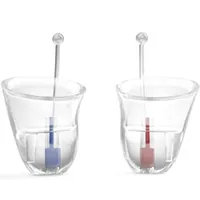Best earplugs for musicians 2025: protect your hearing with these essential audio attenuators, for the practice room to your next gig
I road-tested six sets of the best musician-friendly earplugs, from Alpine, ACS, Minuendo and more - recommended options from budget to moulded
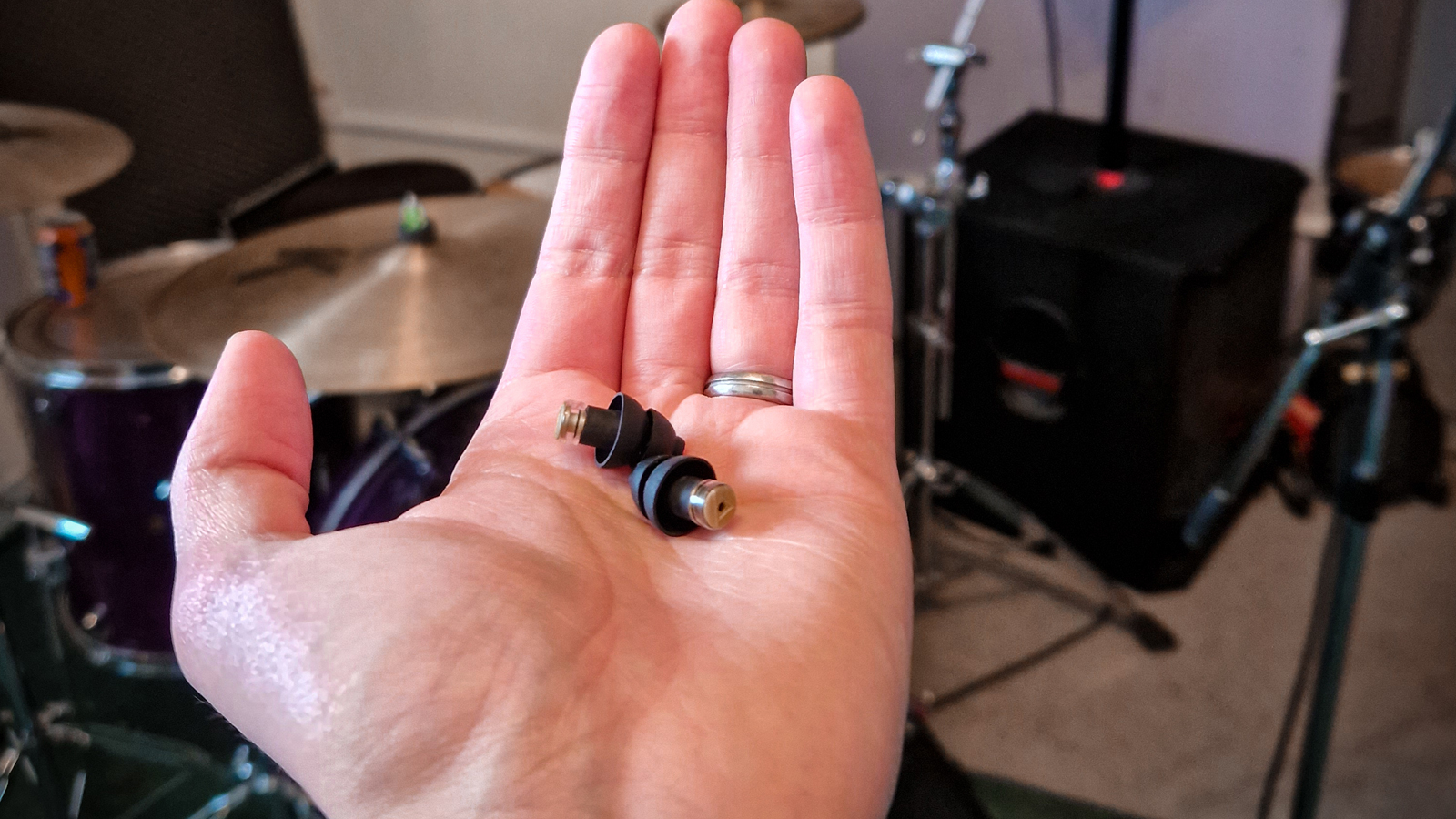
Hands up if you’ve ever experienced a ringing in your ears before. I said, HANDS UP IF YOU’VE EVER EXPERIENCED… you get it. Loud sounds are a fact of life, even if you’re not an active musician or music-lover – so when you spend a lot of time in front of loud amplifiers and louder PA systems, it should come as no surprise that hearing damage is a likely result.
This is why hearing protection is so crucially important to musicians and creators, more important by far than any other tool of the trade. After all, the most important tool of your trade is your ears – and if you risk your ears repeatedly with excessive volume, whether on stage, in front of one, or when rehearsing for your next gig or session, you’re only risking your ability to keep making music.
Earplugs, then, should be a non-negotiable addition to your equipment. As a live musician, session musician, DJ, engineer, guitar tech, or anyone else in music and spending serious time in high-volume situations, earplugs are your safest bet for protecting the fidelity of your hearing. But which are the best earplugs for musicians right now?
Depending on the kind of music you make, you might be looking for different things from your earplugs. Drummers, for instance, face the highest risk by being so close to those explosive transients – and hence will need a pair of earplugs that will shield them as fully as possible from extremely high-spiking sound levels. Live vocalists, meanwhile, need enough clarity to hear themselves clearly in their monitors without exposing themselves to high stage volumes in the process.
Whatever your specific needs as a musician in need of earplugs, you’ll find your ear-protecting solution amongst the following products. I road-tested some of the best earplugs for musicians on the market, to show you which ones are truly worth your while. My top pick overall right now is the Alpine MusicSafe Pro, an reliable, affordable set that are pretty much the industry standard now.
Read on if you know what you’re looking for; if you have more questions about sound levels, hearing protection and how to choose your own set of earplugs, feel free to jump down to my extensive buying advice and FAQ section below.

“I’m a musician of over 20 years who has spent an inordinate amount of time swimming in high volumes. Between regular shows with various bands, regular slots DJing in bars and venues and regular stints recording and producing in the studio, I know more than anyone just how heavily your hearing can be impacted by poor protection.
“A few too many un-attenuated snare hits have already robbed me of some fidelity in one ear; my determination not to lose any more makes me a particularly discerning test subject, and well-placed to help you figure out which earplugs for musicians are the best for your needs.”
How I tested: Each of the earplugs I received for testing were extensively trialled in a variety of situations – from band rehearsals to DJ sets and attending gigs. I evaluated the earplugs for their fit and comfort, for their efficacy at attenuating incoming sounds, and for the fidelity of said sound after attenuation. Other features and included accessories also informed my opinion of each.
My top picks
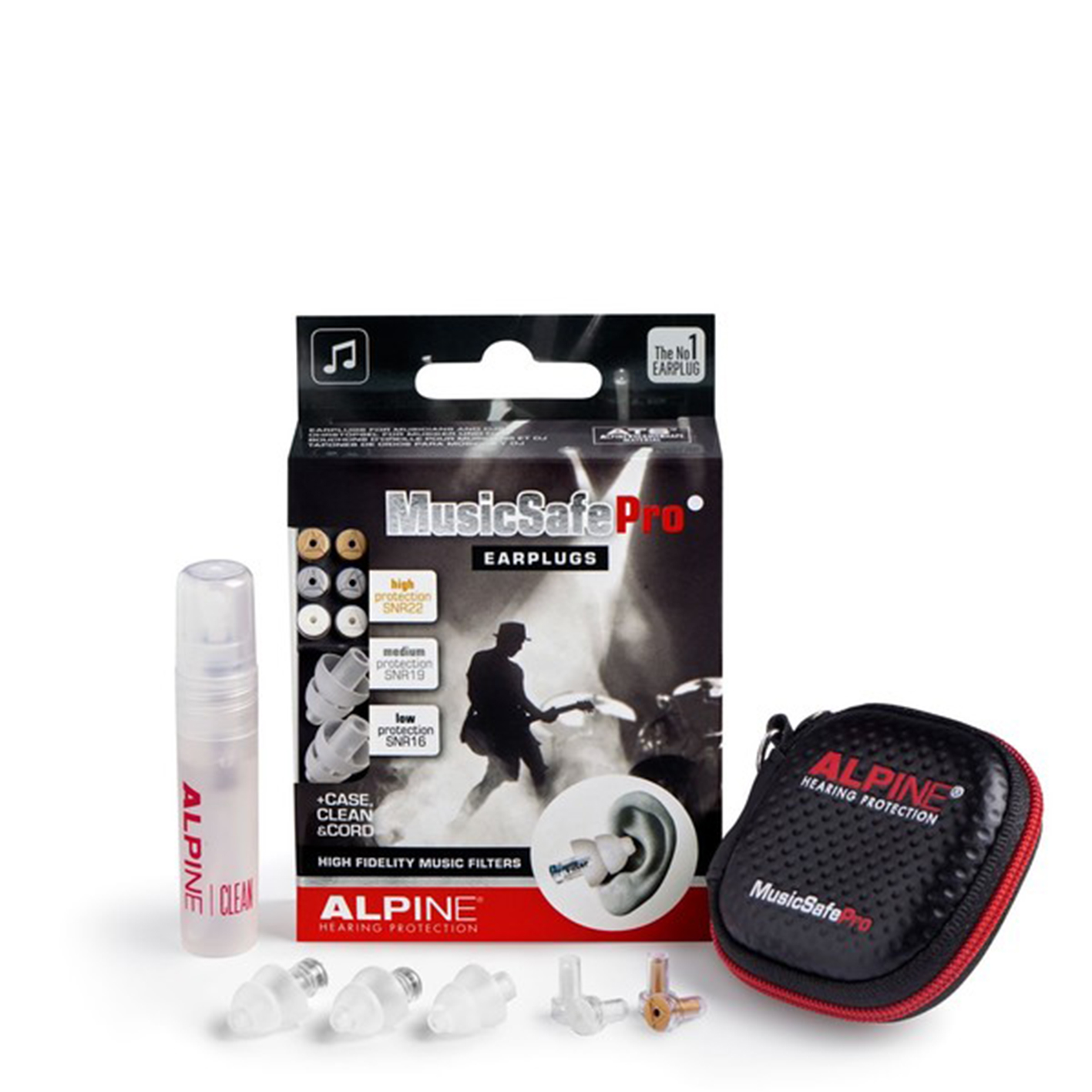
Alpine’s MusicSafe Pro earplugs for musicians are, at this point, practically industry-standard. They come with three levels of attenuation filter, they fit as comfortably as a pair of generic-fit earplugs could fit, and they come in at an extremely accessible price point. There is little not to love here.
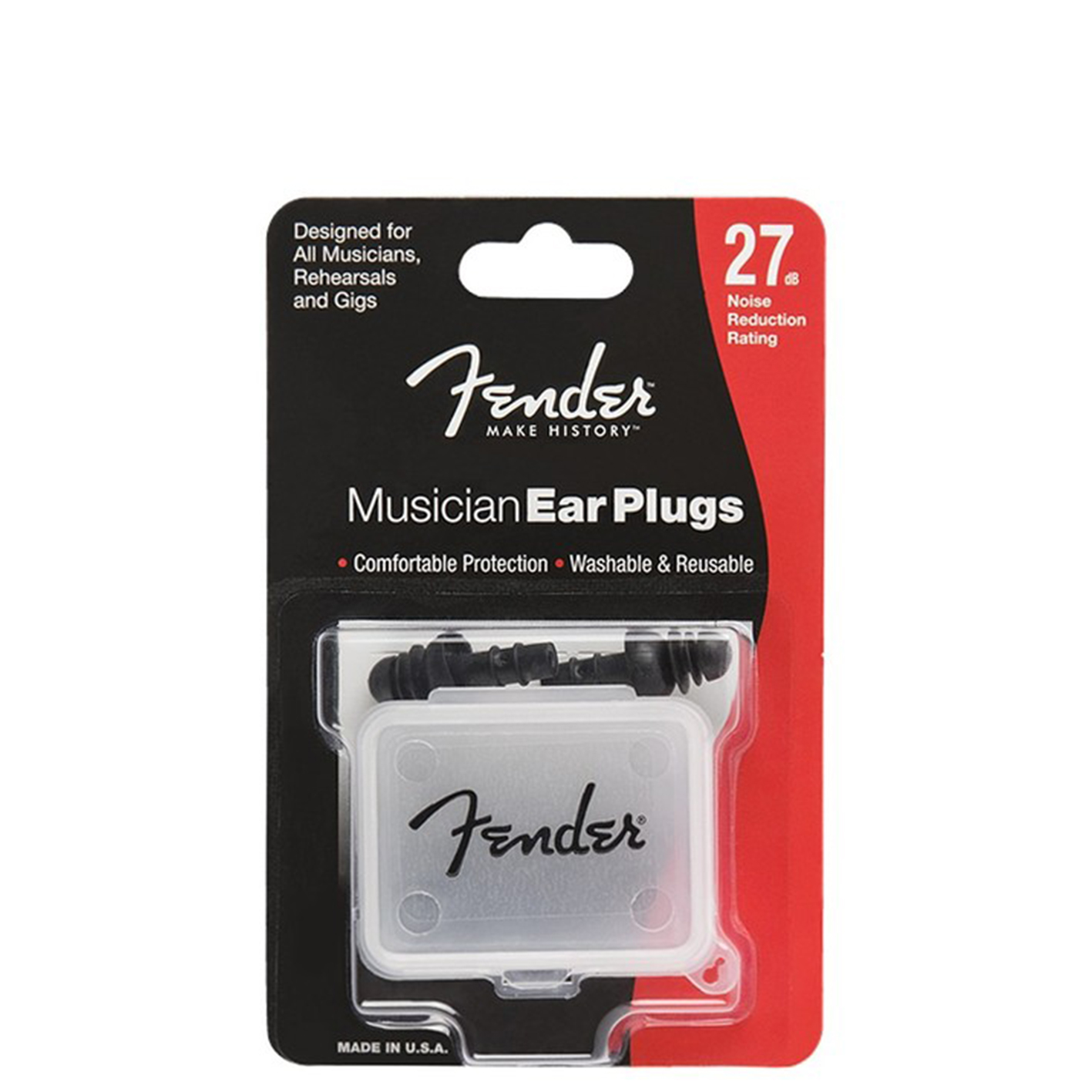
Earplugs don’t get much more affordable than this – and if they do, you can almost guarantee they’ll be terrible. Fender does a fine job of offering some decent quality at this price; if you’re starting out in music, or need an emergency pair to fall back on, these are the budget option for you.
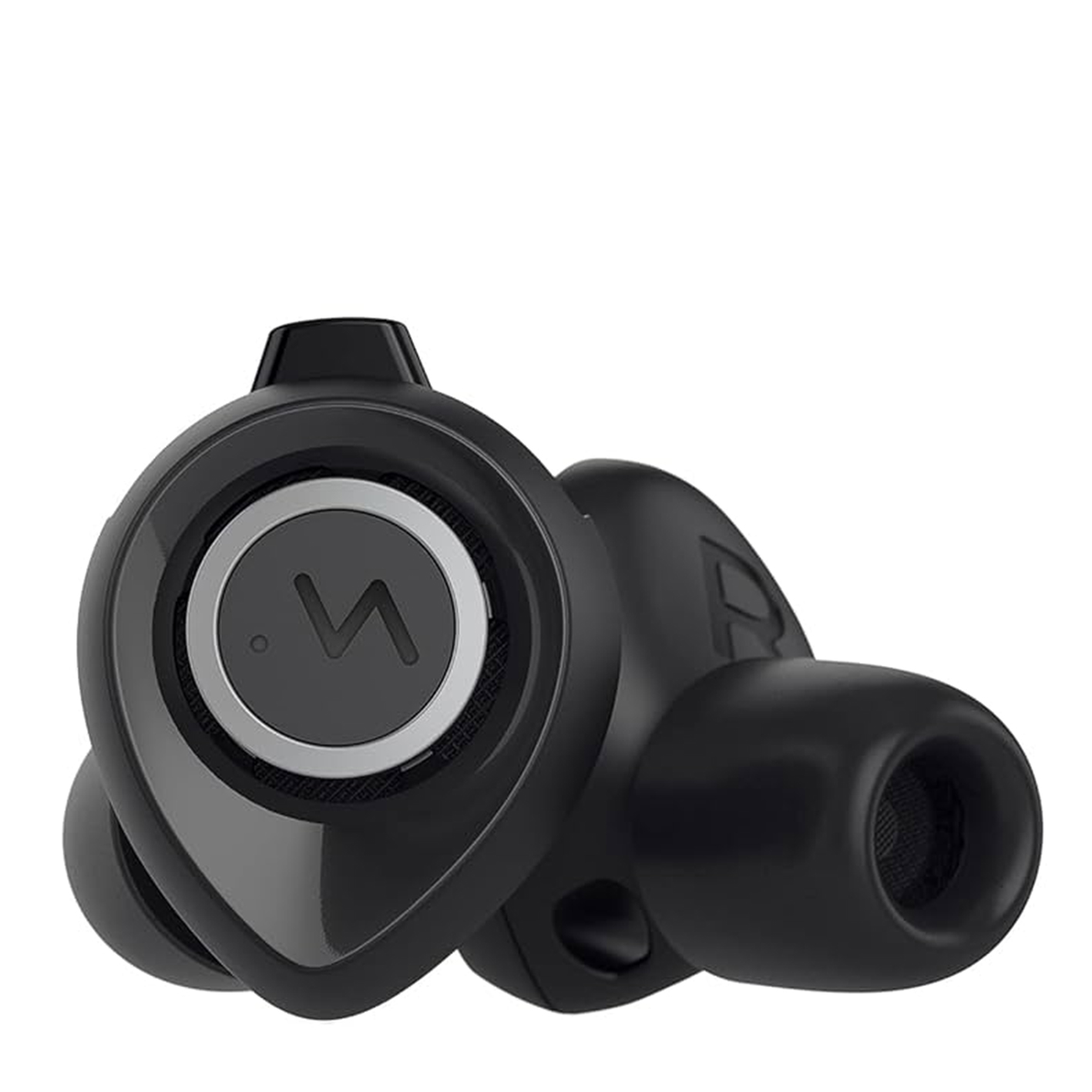
Minuendo’s Lossless adjustable earplugs are one of a kind – and far more than a neat-looking gimmick. These earplugs benefit from continuous adjustment between -7dB and -25dB, via an on-board sound-level slider; they also retain impressive clarity for much of that throw, making them my fave for fidelity.
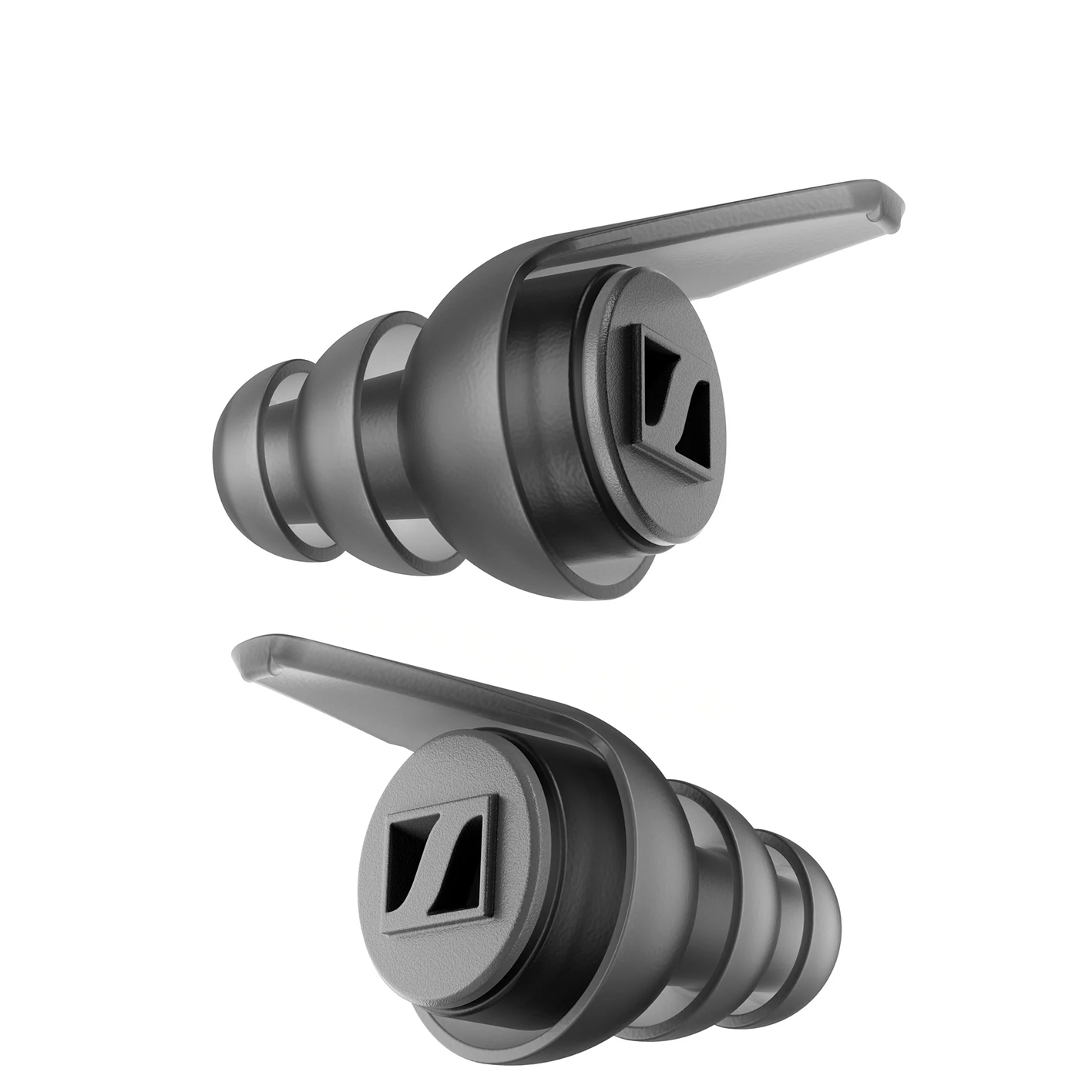
Sennheiser’s SoundProtex Plus fit the bill perfectly for versatility, with three different sizes of earplug to choose from and a further four different levels of attenuation filter to plug in. They fit easily, their carry pouch is handy, and they’ll make themselves useful in pretty much any situation you could want hearing protection for.
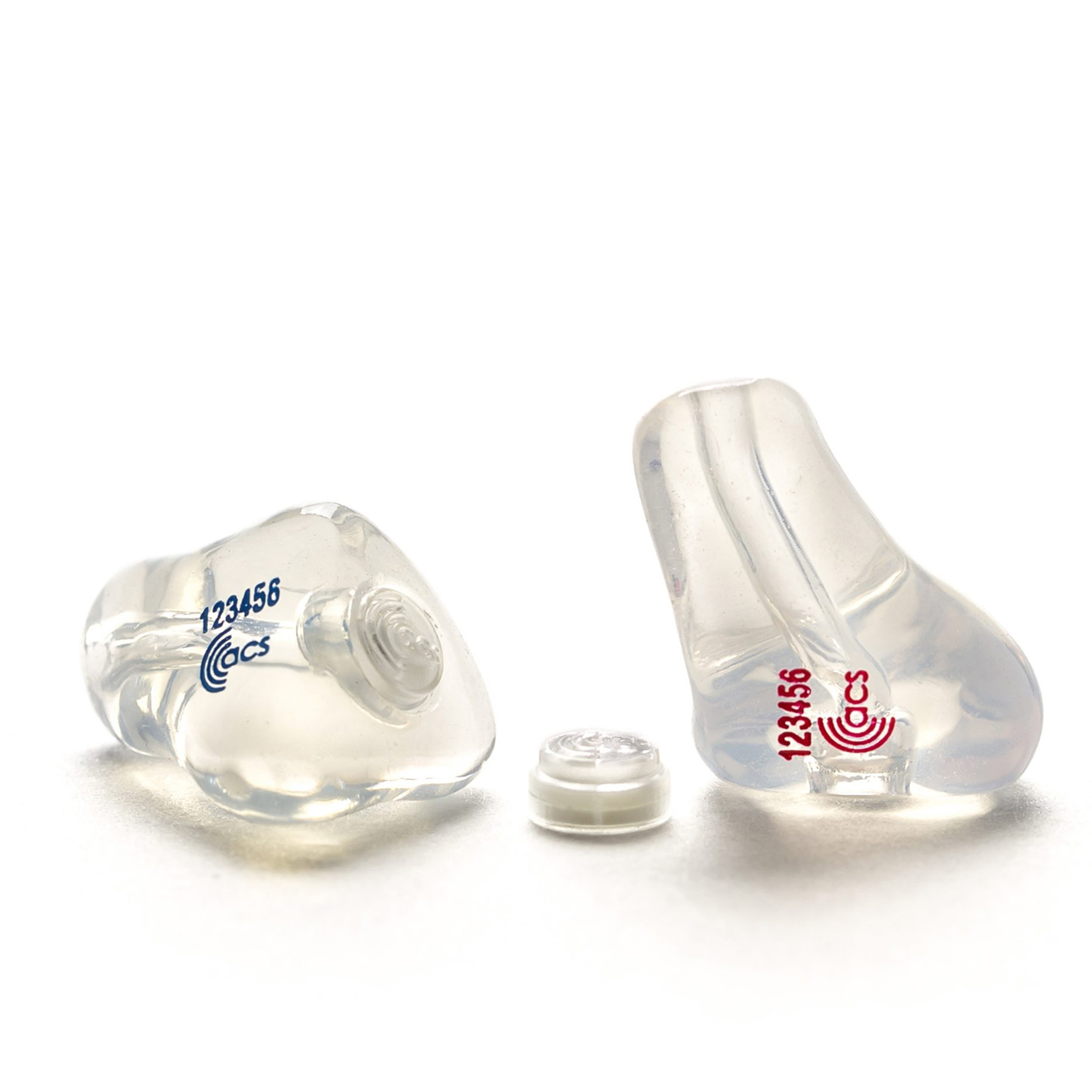
ACS’s custom-fit earplugs are a non-negotiable buy for those with the budget. The PRO17s provide an exceedingly clear sound and some incredibly trustworthy sound attenuation – and are so comfortable to wear, it’s as if they were made for you.
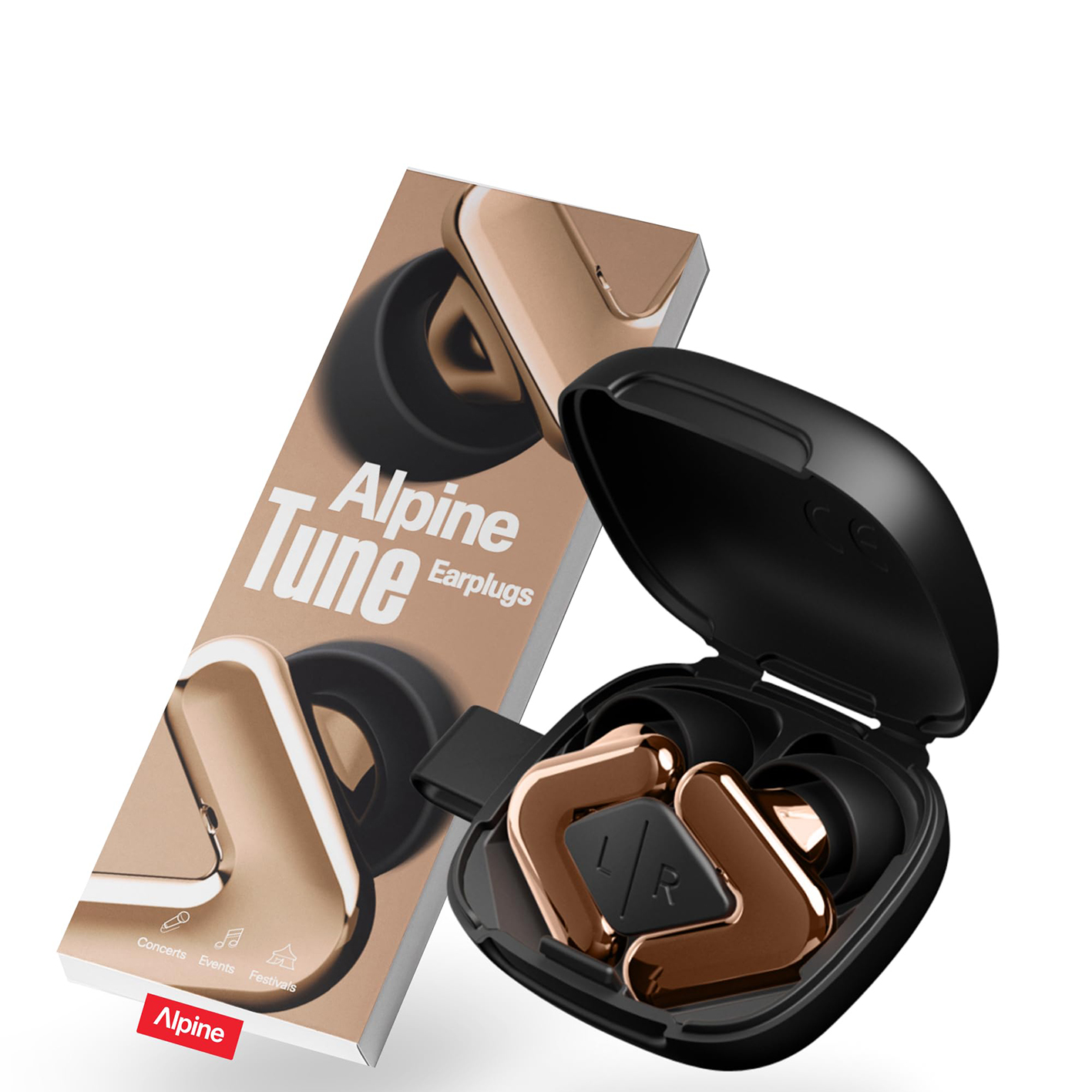
These simple concert-friendly earplugs provide a surprising amount of clarity, alongside an extremely serviceable 19dB of attenuation. I love the ease with which these settle in your ear, and the tiny pouch that’ll fit in even the smallest of coin-pockets.
Best overall

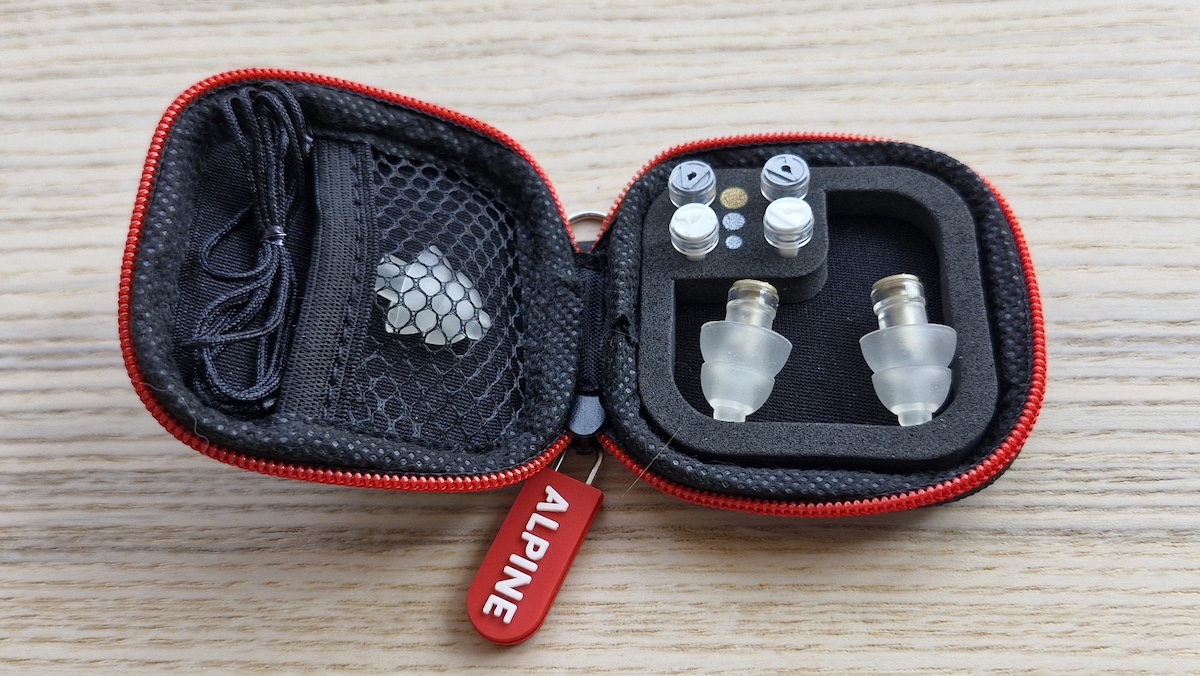

1. Alpine MusicSafe Pro
Our expert review:
Specifications
Reasons to buy
Reasons to avoid
Comfort ★★★★½
Attenuation ★★★★½
Fidelity ★★★★½
Overall ★★★★½
The lowdown: Alpine has been in the hearing-protection game for a while, and it shows. The MusicSafe Pro is a mainstay option, and a hugely popular one amongst musicians of all stripes, having seen a couple of prior iterations before its extremely generous modern-day form. In the box, you get three Alpine earplugs (the third being a spare, and a very thoughtful thing to include), three sets of attenuation filters, a small tube of cleaning spray, a neck leash and a carry case – which, from a pure practicality standpoint, is a stand-out favourite. Though I still have a soft spot for the older-school metal canisters, this semi-soft zip-case makes it far easier for you to access your plugs – and has a foam insert with cutouts for your different filters.
Comfort: The Alpine MusicSafe Pro earplugs are amongst the easiest earplugs to install in your ears, thanks to the length of plastic that houses the attenuation filters and lends rigidity to the centre of the plugs themselves. Simply pull your ear up, and push the earplug in. Don’t be too swift about it, though, or you could scratch the side of your ear with that plastic insert.
Once in place, the MusicSafe Pros stay very much so. Their shape is clever, with a few tweaks on conventional double- or triple-flanged designs; they get in, fill out your canal, and then get comfortable themselves. The outward pressure from those flanges gets a little much after a long stint wearing them, but for most applications these are as invisible to your ears as you could ask for at this price.
Attenuation: There are three options for attenuation filter in the box – a light attenuation at 16dB, a medium attenuation at -19dB, and a high attenuation at -22dB. The high filter is the one I made the most use of, particularly for noise-rock rehearsals in my characteristically pokey studio and rehearsal space. Even after about 90 minutes of relatively close proximity to a thrashy drummer, the MusicSafe Pros held their ground well, and I felt comfortable.
Fidelity: The Alpine MusicSafe Pro earplugs are pretty consistent between attenuation options, though, as you can expect, the lighter filters let more high-end through. Truth be told, though there’s a little softness in the top end in the highest-attenuating filter, I don’t miss the sounds it’s blocking – at least, not as a rock guitarist, and particularly not when most of that sound is uncontrolled cymbal reflections, either in lively-sounding gig rooms or in my pokey little rehearsal box.
Verdict: The Alpine MusicSafe Pro earplugs for musicians walk a fine line between affordability, fidelity and versatility – and pretty much pull it off. Engineers might miss some of the high-end from the heftier filters, but musicians will benefit greatly from the comfy fit, handy carry case and ease with which filters can be interchanged. This all-rounder box of ear-protecting tricks is the platonic ideal for generic-fit earplugs.
Best budget
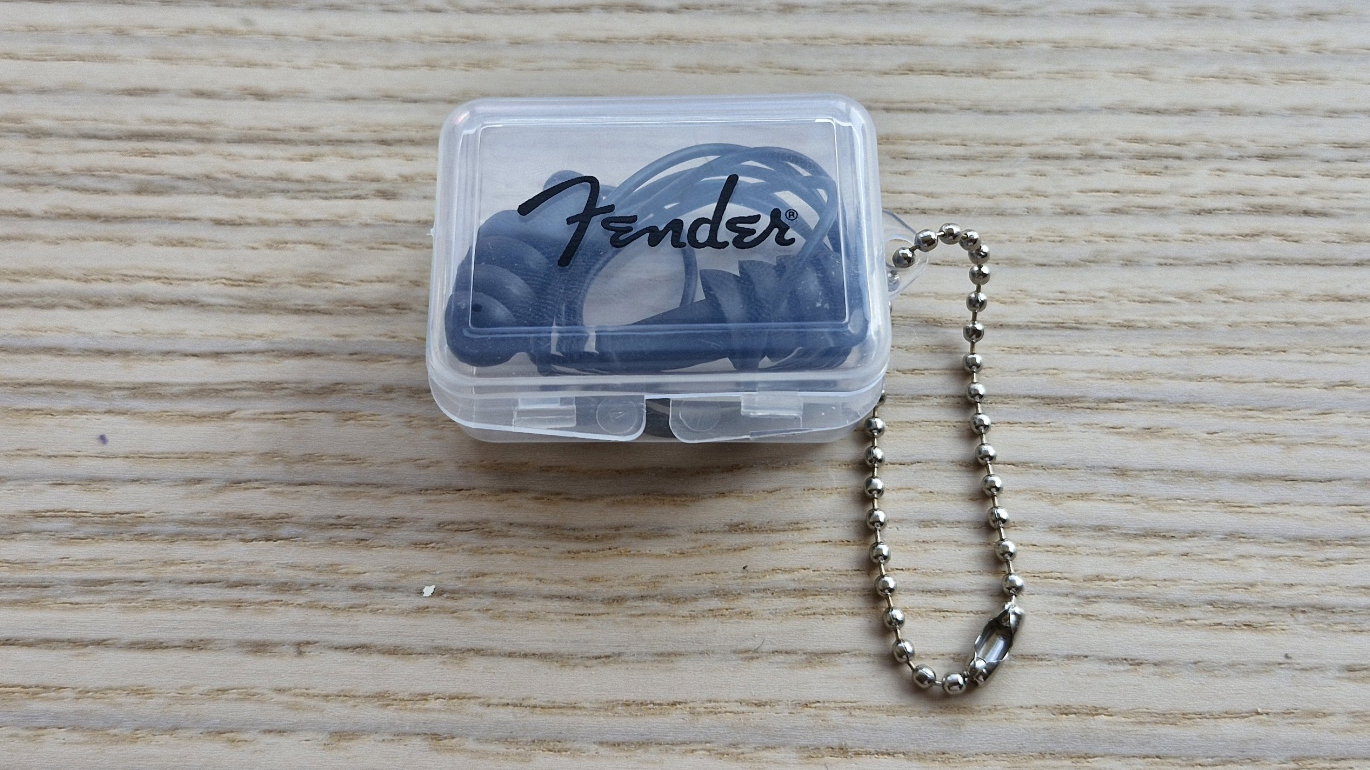
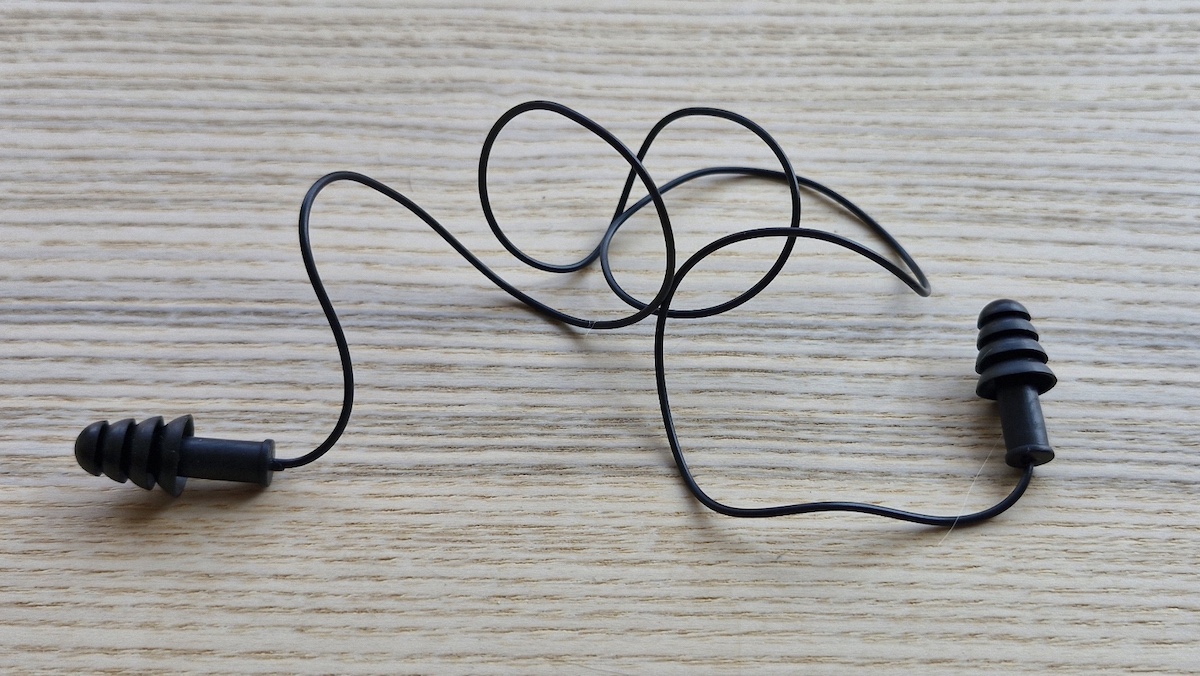
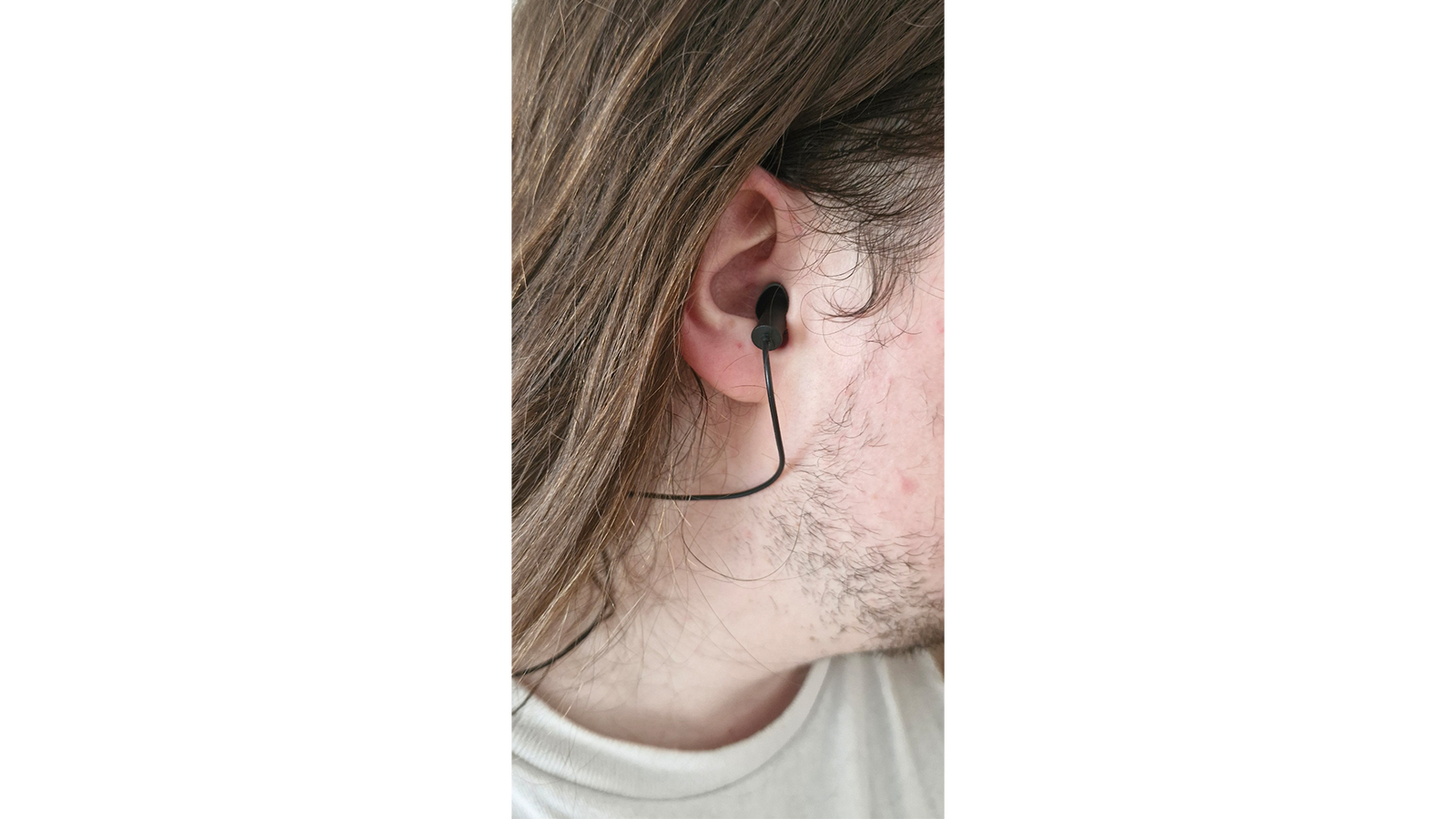
2. Fender Musician Series
Our expert review:
Specifications
Reasons to buy
Reasons to avoid
Comfort ★★★★½
Attenuation ★★★★½
Fidelity ★★★★
Overall ★★★★½
The lowdown: As a musician, Fender will not be a new name to you. The guitar-and-amplifier heavyweight has been branching out more and more lately, up to offering these branded earplugs for musicians as a budget option for the guitarist-about-town. These are quad-flanged earplugs, designed to fit simply and snugly, and to block up to 27dB of sound – a heavyweight set, suitable for the loudest of situations.
Being budget, there isn’t much to this pair of earplugs; they come pre-filtered, and pre-linked by a neck leash to make wearing and removal easier. There’s also a clear plastic case to keep them in, emblazoned with the Fender logo and sporting a ball chain for fastening it to something useful.
Comfort: The Fender Musician earplugs take a little finagling to get in place – at least, if your ear canals appear to be on the smaller side, like mine – but once in and tested, they stay. There’s a lot of material there to ensure the best possible fit in as many ear types as possible; even with that bulk and weight, there was no major discomfort to wearing these for a decent period of time. That said, frequent breaks would help you get the most out of these.
Attenuation: This is where the Fender Musician earplugs really come into their own. It’s rare to find a pair of earplugs anywhere in the entry-level range that so readily blocks so much sound, without being a complete brick wall. That huge attenuation is enough to ensure you’ll be well-protected wherever you are on stage, or however long you are at a loud venue for. As far as confidence in hearing protection goes, this is the most confidence you can buy for the least amount of money.
Fidelity: Being so inexpensive, and being so attenuative, the Fender Musician earplugs won’t be winning any awards for fidelity. They aren’t the flattest in terms of frequency range, but they also aren’t the muddiest earplugs I’ve ever rehearsed through. These were a pleasant surprise for how much detail I could parse, though not much of a surprise elsewhere.
Verdict: This is an incredible amount of bang for buck, in a set of branded earplugs that aren’t the drop-shipping cash-in they might initially look to be to the cynics amongst us. They’re well-made, easy to clean, heavy-duty attenuating earplugs with helpful accessories and some decent longevity to them – a no-brainer purchase if the budget is tight.
Best for fidelity

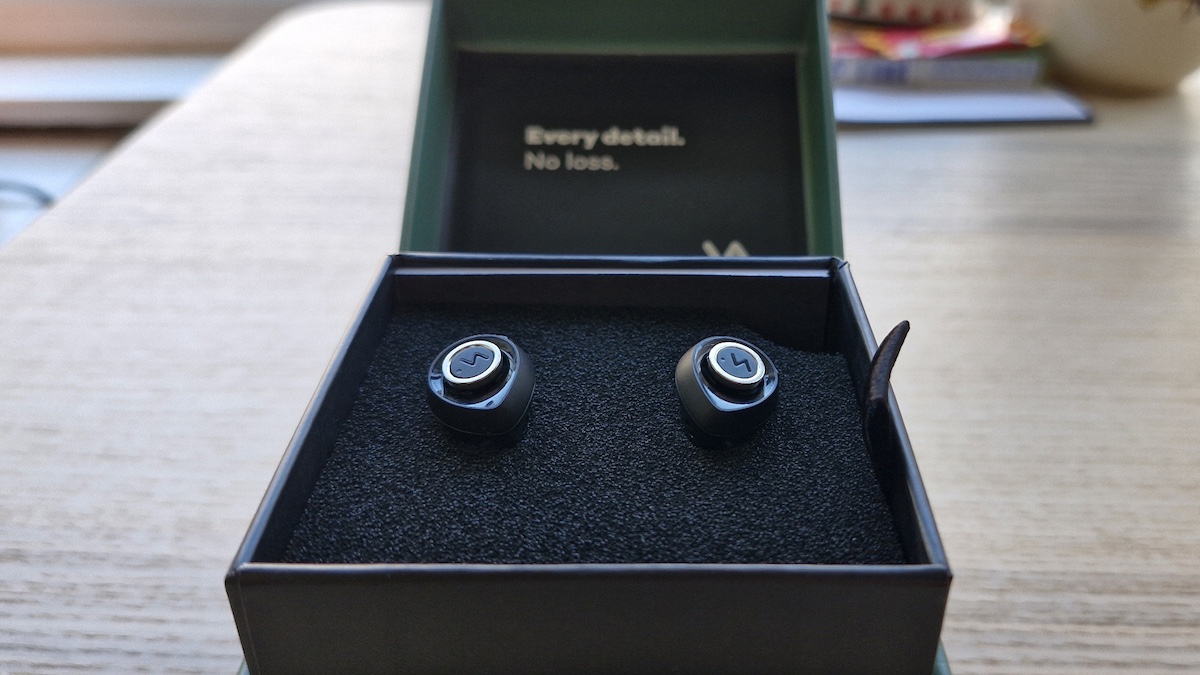
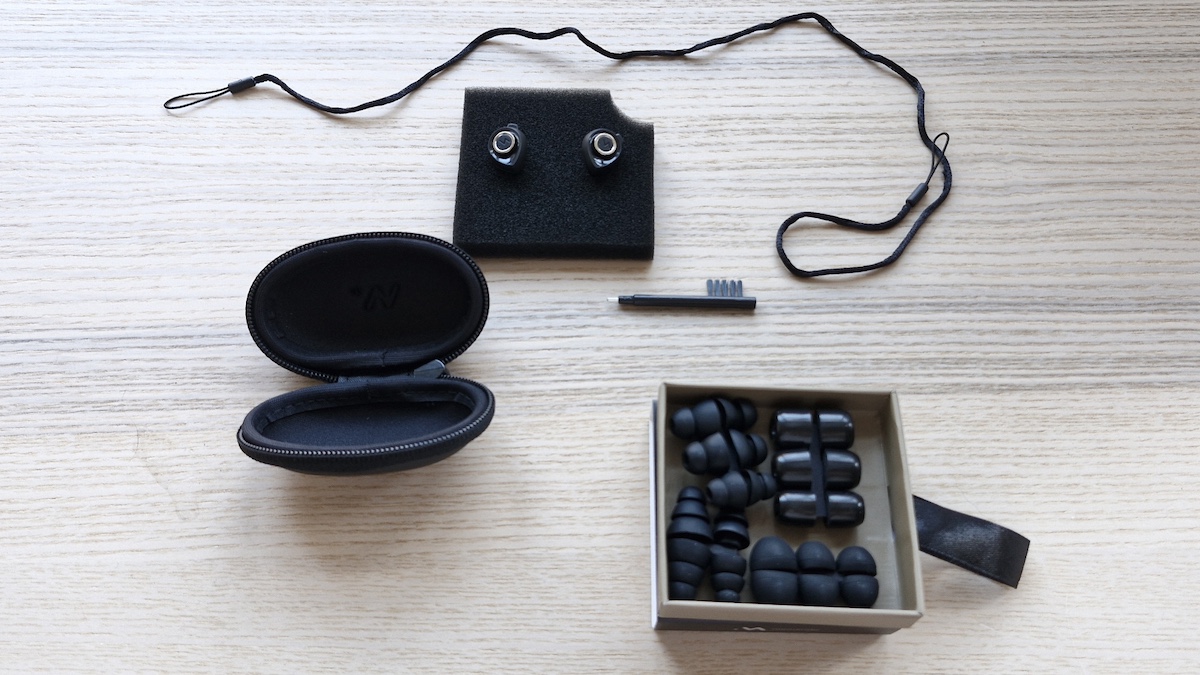

3. Minuendo Lossless
Our expert review:
Specifications
Reasons to buy
Reasons to avoid
Comfort ★★★★½
Attenuation ★★★★★
Fidelity ★★★★
Overall ★★★★½
The lowdown: Ever wished you had a volume knob for your hearing? Well then the Minuendo Lossless adjustable earplugs are the closest you can get to such a body-horror reality. Their chief selling point is adjustable attenuation, wherein a lever atop each earbud acts as a volume control for your ears – a level of convenient adjustability simply not seen in other passive hearing protection products.
The Minuendo Lossless is also quietly getting other things right, though – from a simple, secure neck leash looping system to the rather clever inclusion of magnets in the earplug shells, so they stay connected around your neck or in their carry case. Niftiness is only one part of a great audiological whole, though; let’s find out what else they’re getting right.
Comfort: The Minuendo Lossless fit very snugly in my somewhat-small ear canal – as they ought to, by virtue of the whopping 11 different sets of eartips for you to choose between. My personal favourite is the smaller triple-flanged silicone eartip, which penetrates deep and holds reassuringly firm. The shells themselves are relatively small (at least, for the mechanisms they hold), and fit well in the concha of your ear. I was able to wear these for hours at a time, and experience only mild discomfort towards the end of each session.
Attenuation: It’s easy to dismiss something like the Minuendo Lossless’ adjustable attenuation as gimmickry, but I’m happy to report that, in practice, it’s anything but. For a start, the attenuation range of -7dB to -25dB is extremely useful – and much more expressive than you might initially assume. Fully ‘open’, and there’s a bright clarity to everything in spite of some clear reduction in volume; fully closed, and you feel safely isolated from the noisier stuff.
I happened to find the Minuendo Lossless earplugs an ideal companion for DJing – one of the many things I frequently pinch myself about getting paid to do. Ear fatigue creeps up quick in noisy environments, and only worsens during four-plus hour sets stationed right by the PA system’s loudest speakers. The Minuendo Lossless earplugs are small enough that they don’t interfere with over-ear headphones, and the adjustable attenuation made it so I could set different levels for each ear – one being blasted by the booth monitors, the other being served by the cue mix in headphones.
Fidelity: Adjustable attenuation wouldn’t be particularly useful for the gigging musician or DJ if the earplugs that offered it sounded dull. Luckily, and to Minuendo’s great credit, these Lossless earplugs stay true to the name. There is some treble roll-off as you dial up the attenuation, but this is to be expected, and nowhere near the stark low-pass you experience with cheaper earplugs for musicians.
I found, if anything, that my attention to detail improved when wearing them during a DJ set; they removed a lot of the audio ‘bulk’ in the room, which enabled me to focus a little more directly on elements of my mix – to say nothing of the ear-fatigue alleviation, that enabled me to stay focused more generally. In all, a welcome success.
Verdict: It’s hard not to recommend trying the Minuendo Lossless adjustable earplugs, even if just to experience the novel thrill of having direct control over the volume of real life in your ears. The price is a tough hurdle for many, but it makes sense when you consider both the incredible fidelity and extreme versatility on offer here. I had a ball with them, and suspect they’ll be sharing space in my DJ gig bag for some time.
Best for versatility
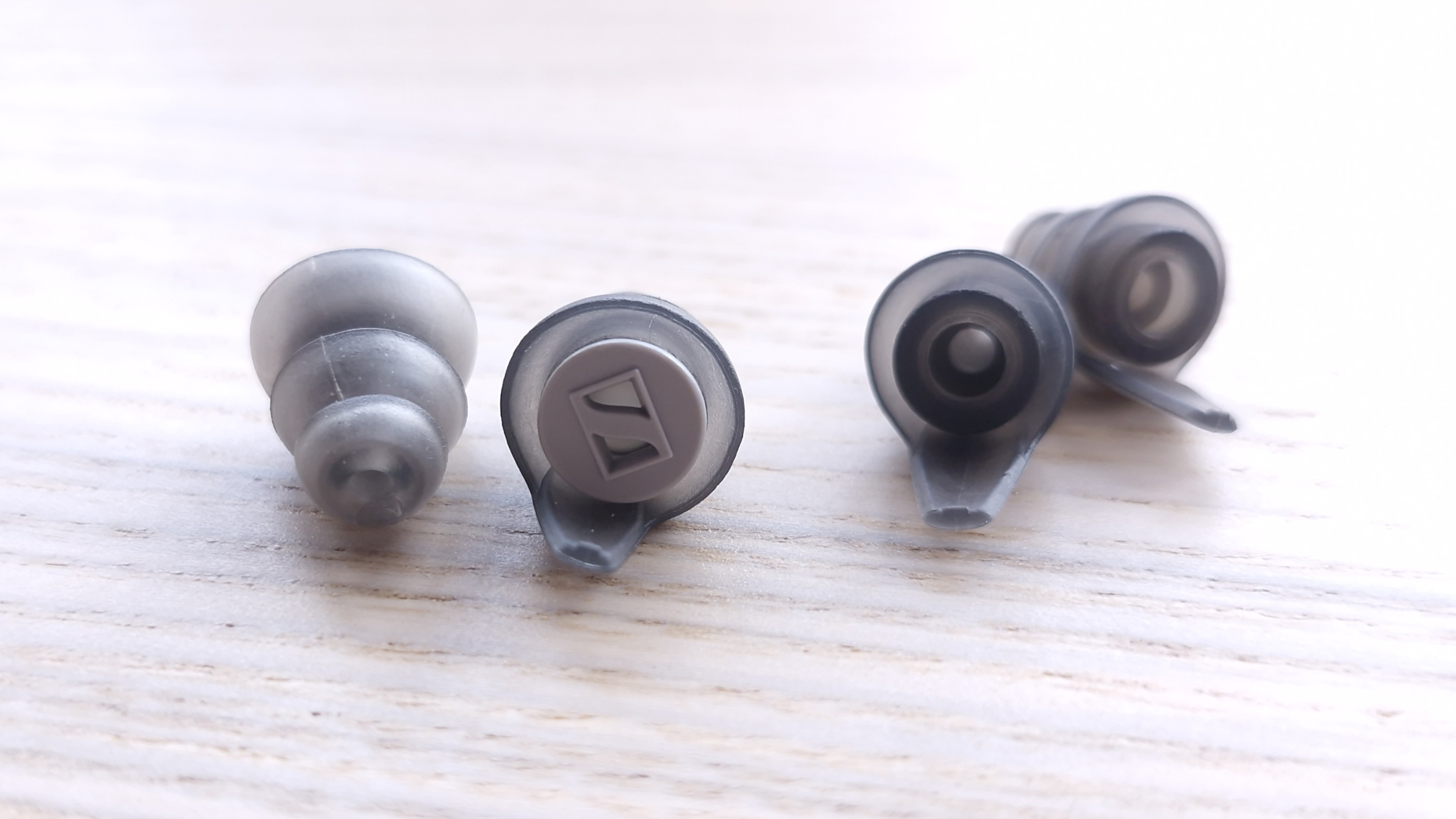
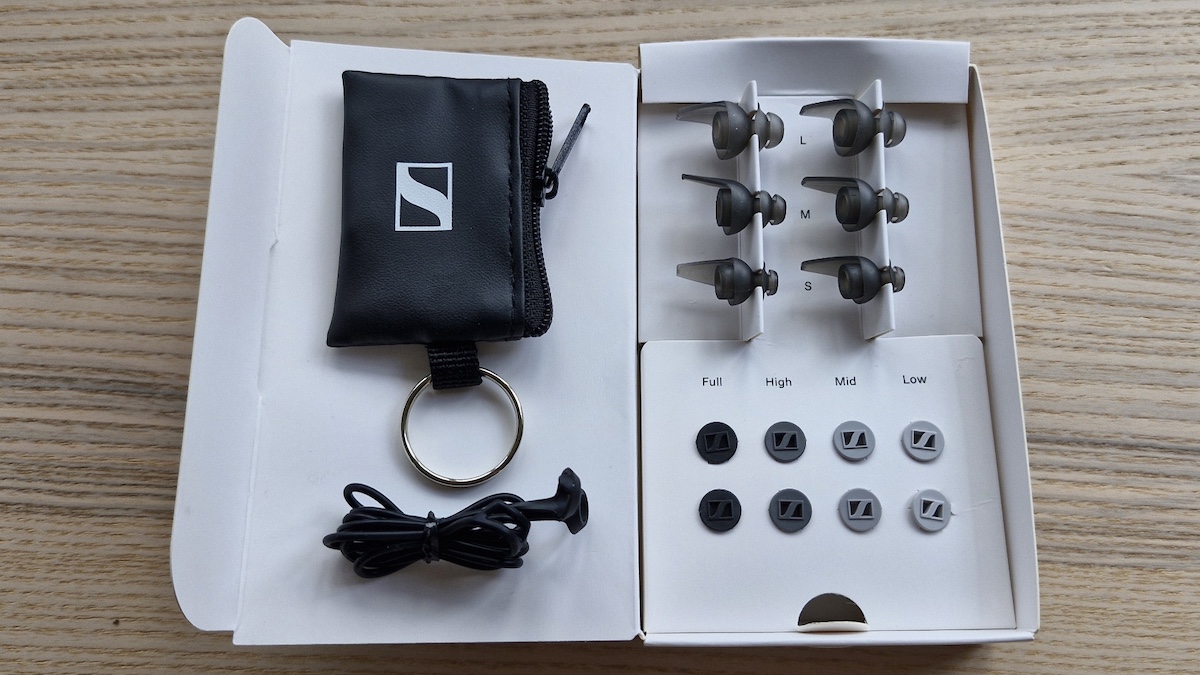
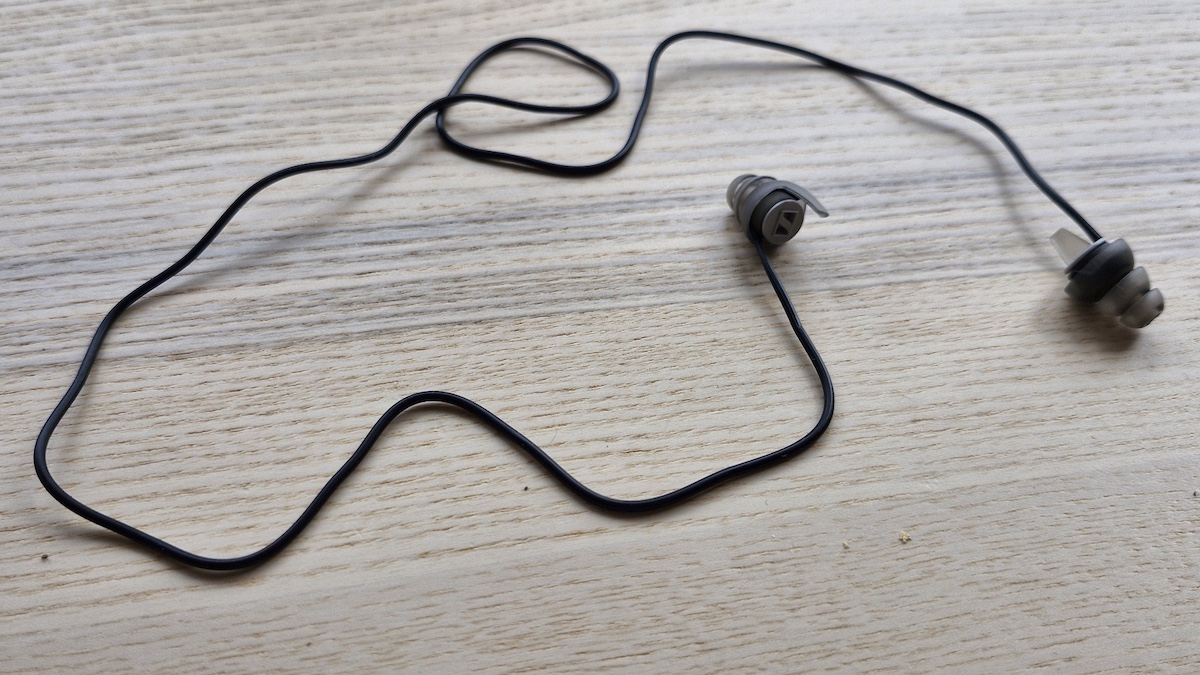
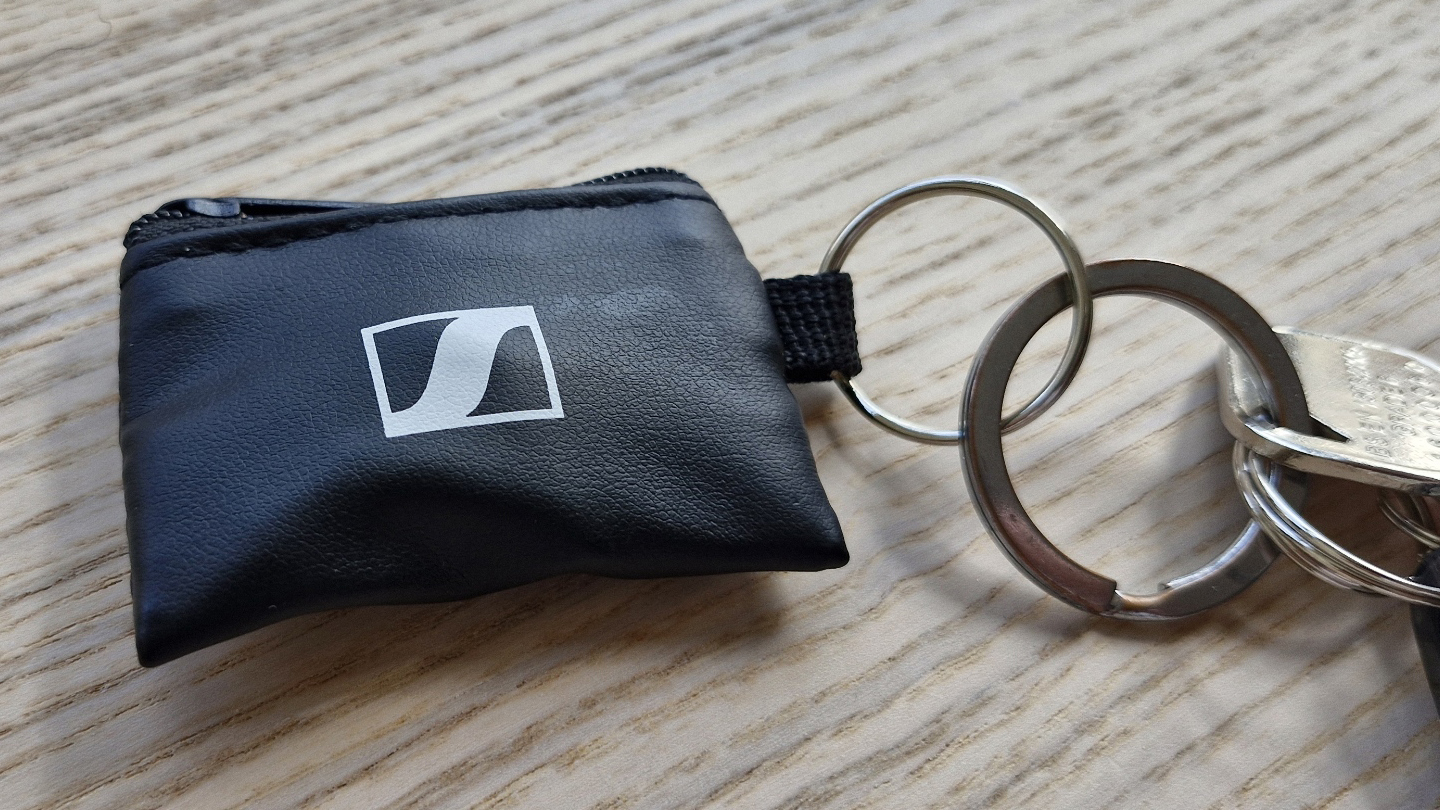
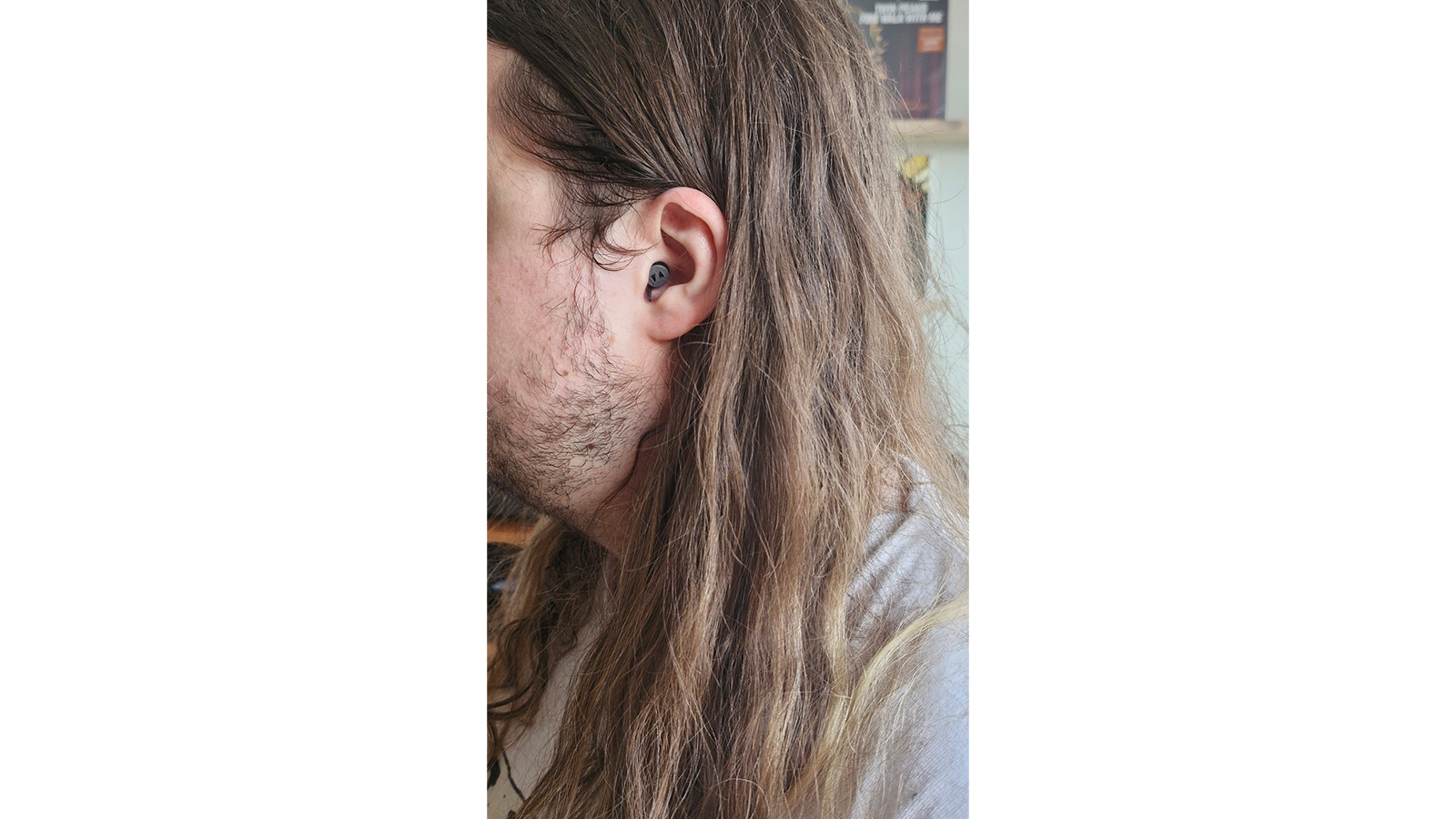
4. Sennheiser SoundProtex Plus
Our expert review:
Specifications
Reasons to buy
Reasons to avoid
Comfort ★★★★
Attenuation ★★★★½
Fidelity ★★★★
Overall ★★★★
The lowdown: Sennheiser is a brand better-known for throwing sound at your ears than frustrating its entry, thanks to its incredible range of professional monitor headphones and great-sounding consumer earbuds. The aural expertise it possesses in this regard is of great benefit to the world of sound attenuation, as attested by the Sennheiser SoundProtex Plus – a bumper box of earplugs for musicians that puts versatility first.
In the box, you’ll find three sizes of eartips and four sets of attenuating filters. This veritable lunchbox of components allows you to match your ear size and ear-protecting needs almost exactly – a simple provision most other generic-fit earplug brands don’t quite meet.
Comfort: The SoundProtex Plus earplugs take a little work to get comfily ensconced in your ears. In other silicone ‘plugs, the filter provides enough solidity to enable a deep fit; here, the filters are coin-shaped, and don’t give you much purchase. Once in, I found the SoundProtex Plus’ silicone eartips to be somewhat delicate with my ear canals when placed – if not hugely comfortable in high temperatures or for extended periods of wear. They’re absolutely comfortable for short-to-medium stints, but can get a little irritating with sweat.
Attenuation: The SoundProtex Plus comes with four different ‘strengths’ of attenuation filter: 10dB, 17dB, 20dB and 25dB full block. Each have their own applications, whether you want the lightest filter to soften the bite of acoustic instruments through a PA, or a complete plug for aggressively loud and dangerous situations. I found the medium filter to be the most applicable from both an audience and musician standpoint, providing some measurable volume reduction while still being open enough to let some helpful high-end through.
Fidelity: The fidelity offered by the Sennheiser SoundProtex Plus differs depending on the attenuation filters you have installed. The full block, naturally, is more concerned with halting dangerous sound pressure waves than it is improving your listening experience, so don’t expect any high-fidelity miracles here. Both the mid- and high-attenuation filters are surprisingly clear, though the higher filter does roll off a little more high end; I tried both sets in band rehearsals and at a Father John Misty gig, and didn’t feel I was missing anything but danger.
Verdict: The Sennheiser SoundProtex Plus is a great buy for the sheer versatility on offer. With four levels of attenuation to pick from, you can go from protecting sensitive ears during an unplugged rehearsal to full-block for your loudest, angriest drumming. Three sizes of tip mean you don’t have to put up with ill-fitting ‘plugs, either. I wish they’d be more comfortable for longer stints, but they nonetheless present a powerful array of ear-protecting options for the jack-of-all-trades musician.
Best moulded
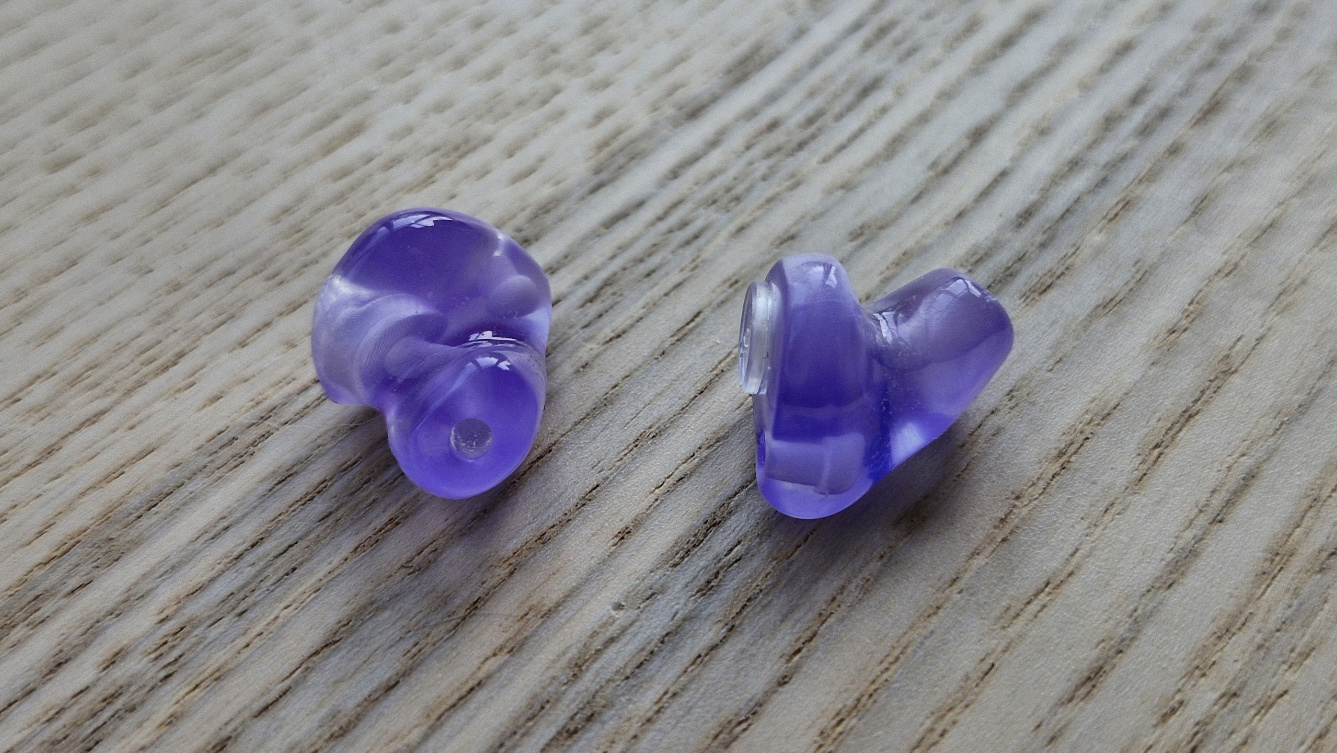
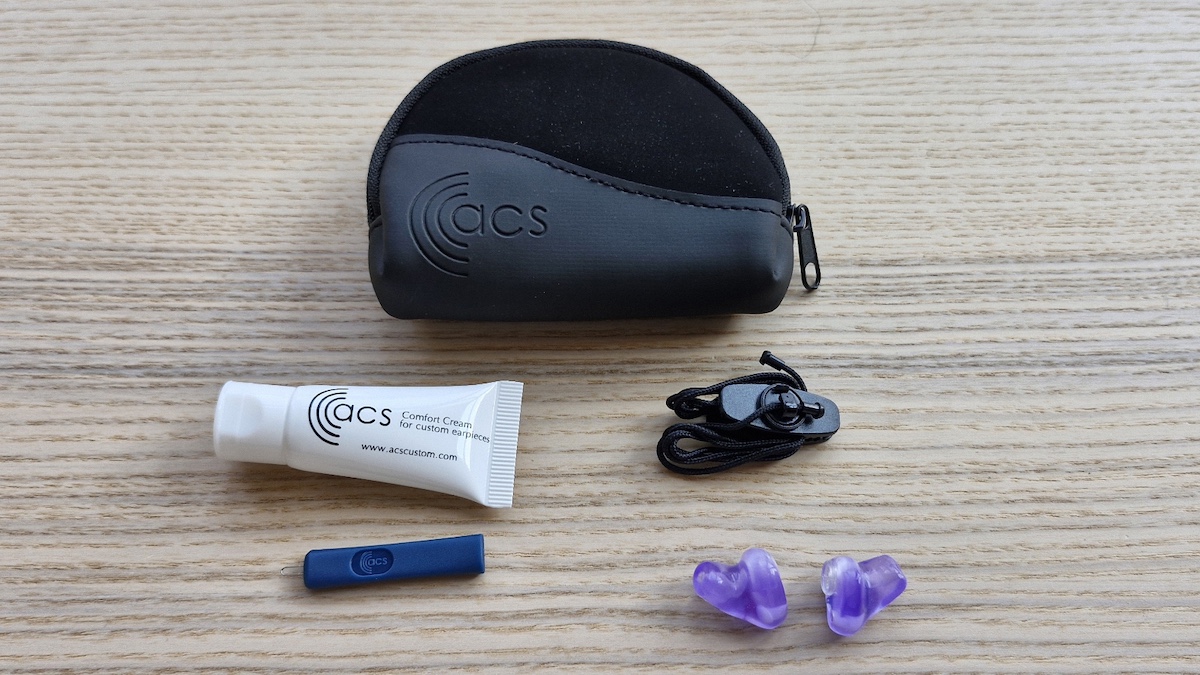
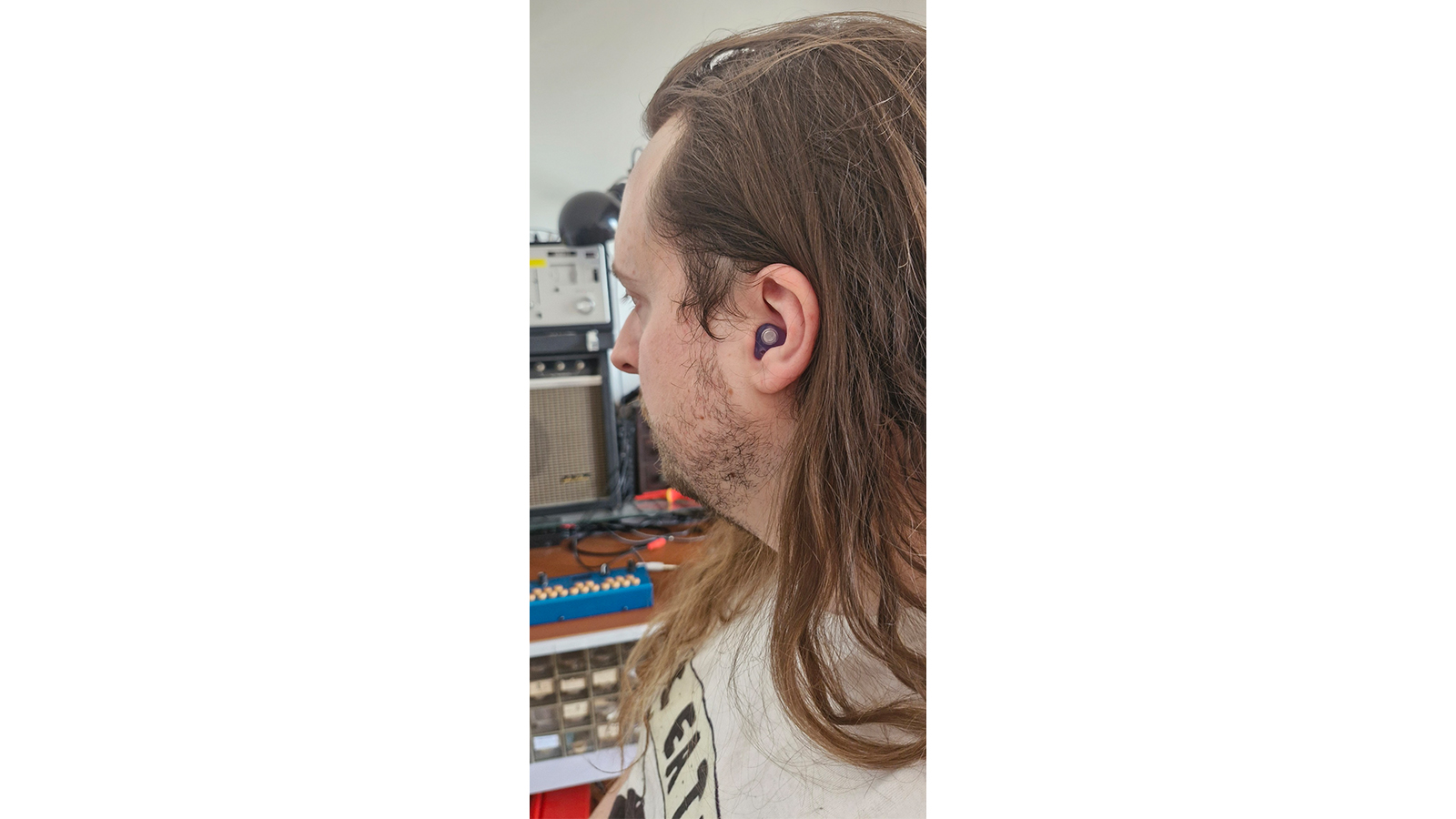
5. ACS PRO17 Custom
Our expert review:
Specifications
Reasons to buy
Reasons to avoid
Comfort ★★★★★
Attenuation ★★★★★
Fidelity ★★★★★
Overall ★★★★★
The lowdown: Every other pair of earplugs in this guide is generic fit – meaning they are designed to fit the vast majority of ear canals, hence can be worn by anyone. When you design something to fit anyone, though, it doesn’t mean it works for everyone. Ear canals are unique, like fingerprints; to guarantee not only a comfortable fit, but also a repeatable audio attenuation experience, you would ideally have earplugs moulded specifically to the shape of your own ear canals. Enter ACS, and its Custom PRO17 earplugs for musicians.
These are custom-moulded passive earplugs, designed to fit your ears perfectly and offer a flat 17dB reduction in sound level while doing so. If you’re a professional musician who needs a comfortable long-term solution for hearing protection, it’s imperative that you read on.
Comfort: These earplugs are custom-made for you, from impressions taken at a participating audiology clinic near you; mine was Leeds Audiology Clinic, at which my experience couldn’t have been more pleasant. Sitting for impressions – made by filling each ear with a substance my audiologist gleefully likened to playdough – was a strangely blissful experience, and over all too soon.
After impressions are made, your clinic of choice sends them off to ACS Custom on your behalf. From there, it’s roughly four weeks until a gift arrives in the post for you: a unique pair of custom-moulded earplugs designed for your ears and your ears alone, with a carry pouch and some other incidental goodies.
I tell you all this to reinforce the weight behind the following statement: these are the most comfortable earplugs I have ever worn, and you will ever wear. Not if you wear mine though. The fit is, as you’d expect, snug to the point of completeness – and, thanks to the shape of your ear canals, makes the PRO17 Customs difficult to remove any other way than ‘on purpose’. There’s little extraneous material on the outer part of each plug, so they stick out or interfere. It would be easy to forget I was wearing these.
Attenuation: That complete fit is a majorly reaffirming sensation, that assuredly communicates there’ll be no unwarranted bleed with the PRO17. Every sound entering your ear canal is funnelled through ACS’ PRO17 filter – meaning guaranteed control over the sound levels your ears experience. My first test-wear in a quiet living room was genuinely unnerving, for how effective they were at pulling down the volume so flatly and cleanly.
I found the PRO17 filters to be ideal for my gigging purposes, but if you spend more time in high-volume situations, as an engineer or as a club DJ, you’ll probably need a little more attenuation to be safe. Luckily, the filters are interchangeable, and there are other ACS Custom Pro filters available – with attenuation ranging from 10dB all the way up to 27dB, and including an ‘Impulse’ filter option, with 15dB attenuation and 33dB peak protection.
Fidelity: Put simply: the ACS Custom PRO17 earplugs are the best-sounding earplugs for musicians I’ve ever experienced. They’re completely neutral, and as a result everything is just as present as it would be without earplugs – but dampened down to a comfortable listening level. With the moulded fit, there’s no bleed and hence no odd disbalancing of sound; everything is proportional, and absolutely no energy is lost from performances. This is as close to ‘transparent’ as you’ll get without active in-ear monitor tech.
Verdict: The only reason these don’t top my list completely is the price ($/£149) – and not because the PRO17s are overpriced, by any stretch. They give you far more in comfort, security and safety than the price you pay for them, but that price ultimately isn’t one that every musician can afford. So, while some cheaper generic-fit earplugs take the ‘best overall’ mantle, know that the ACS PRO17 Custom remain my favourites.
Best for casual wear
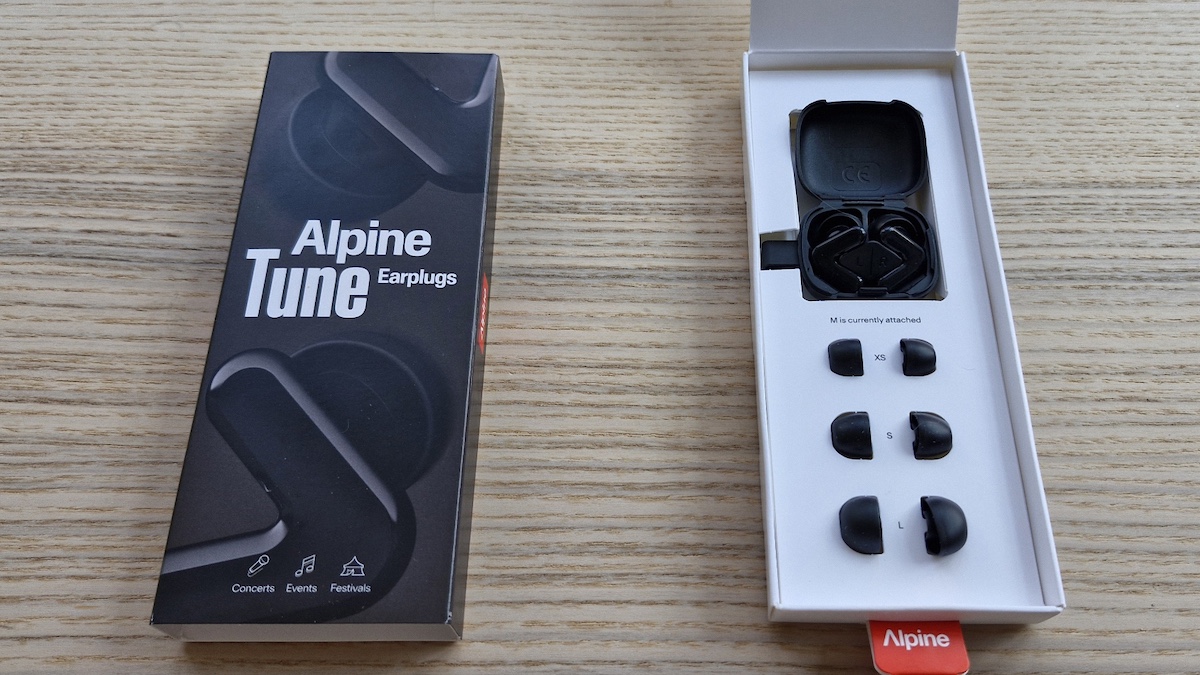
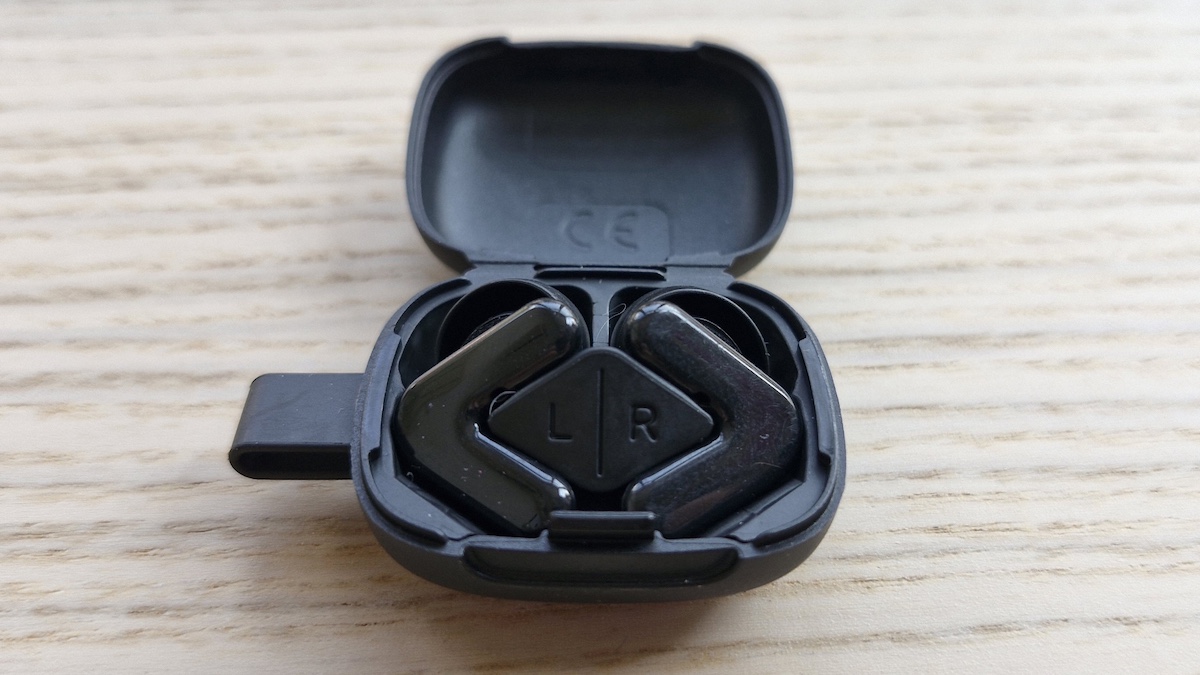
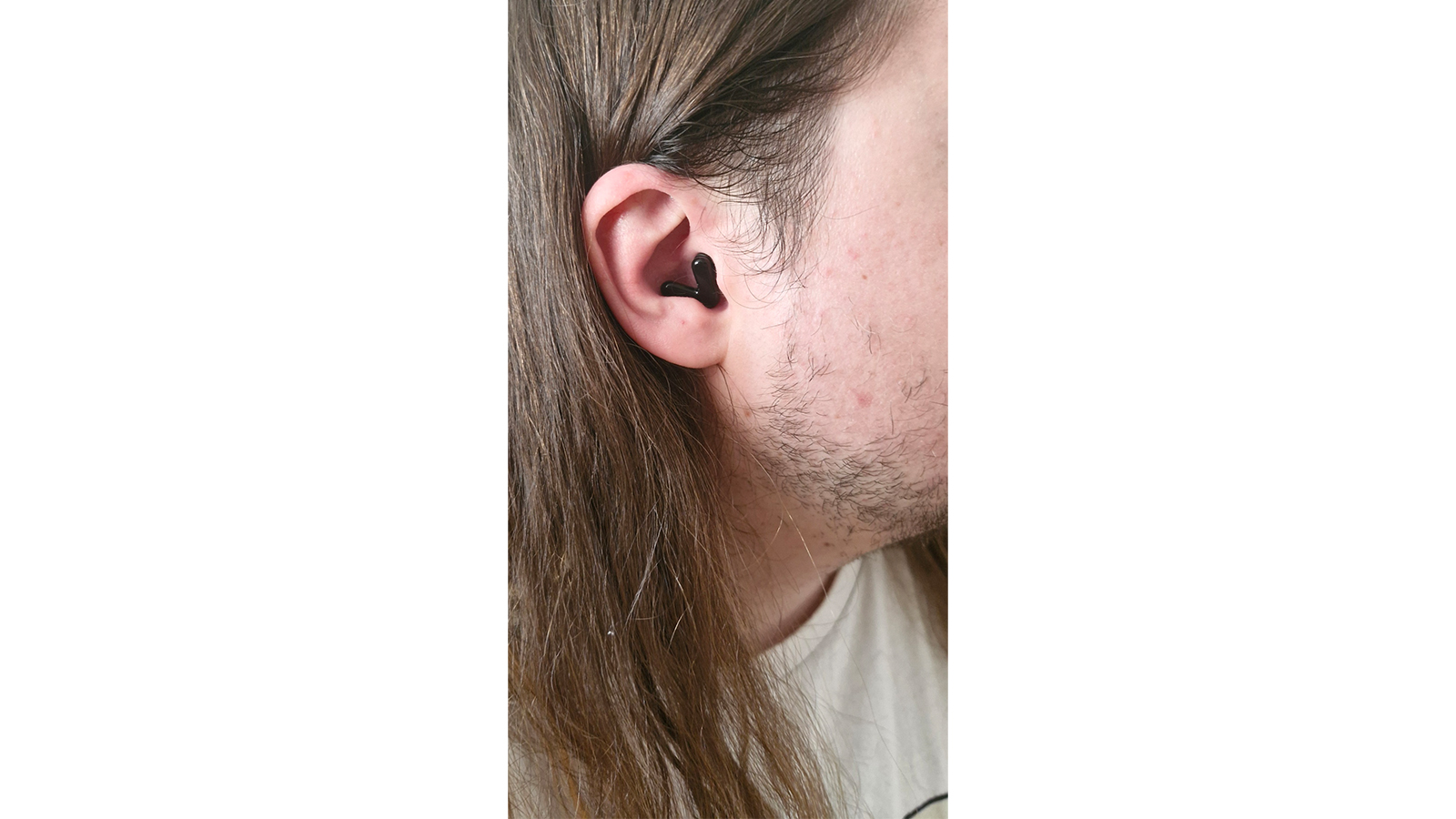
6. Alpine Tune
Our expert review:
Specifications
Reasons to buy
Reasons to avoid
Comfort ★★★★
Attenuation ★★★★
Fidelity ★★★★
Overall ★★★★
The lowdown: Alpine returns, this time with a pair of earplugs aimed more towards music fans than musicians. The Alpine Tune series of earplugs are a serious step up from the basic ‘plugs with which most punters are accustomed – and actually a powerful pair to have in the back pocket as a musician, whether you don’t want to risk your ‘spensive in-ears between gigs or find yourself caught short in a high-volume situation.
Comfort: The Alpine Tune earplugs bear more in common with in-ear headphones than other earplugs, utilising a V-shaped body on which single-flange eartips are mounted. As such, these are very easy to situate in your ear, and sit prettily thereafter. Though there isn’t as much penetration into the ear canal as other earplugs offer, these still get a decent purchase in your ear canal. I’m not the biggest fan of the material used for the eartips, but I will say that I didn’t get fatigued wearing these after an hour of wear – a note to their credit.
Attenuation: The Alpine Tune earplugs offer attenuation of 19dB SNR – a decent amount of level reduction that serves to keep things feeling lively. Despite the fact that these don’t penetrate as deeply into the ear as other earplugs, there’s still a solid seal and some robust attenuation taking place.
Fidelity: I wasn’t expecting much in the way of fidelity from the Alpine Tunes, simply for the simplicity of their fit; I’m glad to be wrong, though. I found the Tunes to be remarkably clear, with brighter tones translated well and a nice beefy mid-range staying present. Bass frequencies become a little flubby, but this is by no means an impediment to the Tunes’ efficacy. For a pair of casual earplugs, these blow a great many pro sets out of the water.
Verdict: Alpine’s Tune earplugs may not quite fit the bill for a pro musician embarking on a multinational tour, but there’s still a great deal for musicians to like here. The small form factor, solid body and easy fit make them a very convenient set to take out when you want to leave your posher earplugs at home – and they’d do the trick for most gigs anyway.
Also tested
DeciBullz Custom Molded Earplugs ★★★★½
Decibullz Custom Molded earplugs marry a clever thermoplastic outer-ear case with deep-fitting eartips; warm the earplugs and mould them to your concha for a confident fit, and some powerful sound isolation. These are a great shout for drummers who want to eliminate the possibility of bleed when thrashing the drum kit.
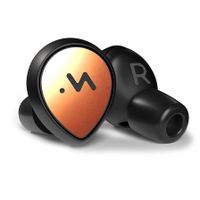
Minuendo Lossless Live ★★★★
Minuendo won out for fidelity in my shortlist above, with its Lossless adjustable earplugs; if you want to experience that impressive fidelity without the adjustable-attenuation feature, you can with these – the Lossless Live. Offering 17dB of attenuation with immense clarity, these are some top-flight fixed-attenuation earplugs.
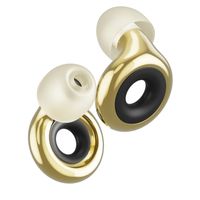
Loop Experience 2 Plus ★★★★½
Loop have been the market leader for consumer-friendly earplugs for a little while now, and the Experience 2 Plus continues to truck in that same success. These ‘plugs offer 17dB of attenuation and an additional 3dB ‘mute’ add-on. They’re light, comfortable and very much do the trick.
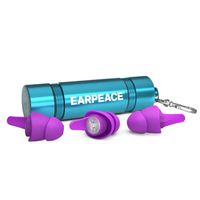
EARPEACE Music Pro ★★★★
Whereas most flanged earplugs are uniformly round and expected to deform quite heavily to attain a snug fit, EARPEACE’s Music Pro earplugs are pre-contoured for a comfier fit. Add in some nifty 20dB filters with an excellent sound profile, and an aluminium capsule for keeping them safe, and you’ve a robust little box of ear-protecting tricks.
Earasers ★★★★½
The filters that ensure a flat frequency response akin to using studio monitors. The benefit of this is that every frequency you're supposed to hear is accurately represented through the earbuds, yet overall noise volume is also reduced accordingly. This makes them perfect for live sound situations. We were a bit reluctant to pull too hard on the antenna-looking part of the bud because it feels a little flimsy, but once we'd got to grips with them we found these to be among the best we'd tried.
How to choose the best musician earplugs for you
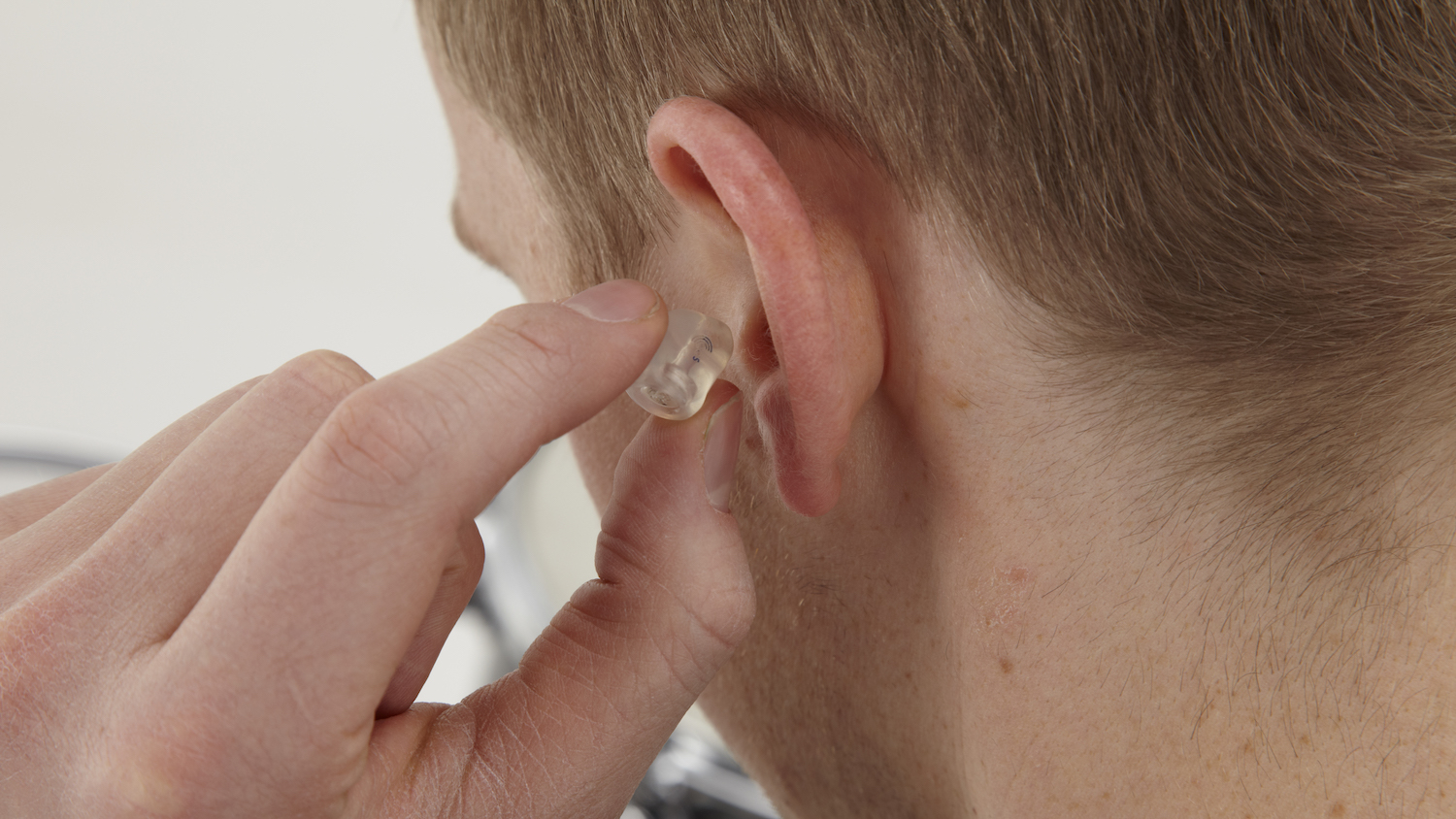
Though all earplugs for musicians do essentially the same thing, not all earplugs are made alike. In order to pick the right earplugs for your own needs, you should keep the following factors in mind:
1. Listening environments
Firstly, where will you be using your earplugs most often? Not only can different listening environments pose different levels of risk, but your practice can also greatly inform how useful a given set of earplugs really is.
If you’re a drummer, for instance, you’re a lot closer to high sound levels than other musicians in a band by virtue of the spiky transients your drum strokes produce; you’ll need a high level of attenuation to mitigate the damage these transients can cause. As a sound engineer, you’re spending a lot of time in front of loud PA systems – but also need to be able to hear everything as clearly as possible across the frequency spectrum, meaning fidelity will be more important to you as a criterion (more on which in a second).
Whatever it is you do most of all, take a moment to think about what that means for your average listening environment, and what you need from your earplugs besides safety. Hold this in your mind while we go over the following points, and you’ll find yourself narrowing in on your needs pretty quickly.
2. Fit
If you think you need earplugs, it’s practically guaranteed that you’ll be wearing them for relatively extensive periods of time. If you’re playing gigs, you’re looking at around 45 minutes for soundcheck and five hours of showtime each night, to say nothing of rehearsals; if you’re a club DJ, that’s up to five hours a night of high volumes to contend with. Whatever your niche, you need those hours to be comfortable ones.
This is important to consider because not everyone’s ear canals are the same size – and some may struggle with one-size-fits-all earplugs if theirs (like mine) are especially small. Some earplug brands offer different styles of eartip, which you can swap out to find the right type or size for your ear canal. Others are made with softer material, and far easier to fit comfortably as a result. If you have a higher budget, you can get moulded earplugs that fit your ears perfectly – and enjoy a level of comfort no other ‘plugs come close to affording.
3. Fidelity
Saving your ears is a no-brainer, but ideally, you’d like not to experience any extreme compromises in the quality of sound you’re hearing in the process. Delivering this, though, is more complex than it looks. Energy is utilised differently by different frequency bands, and hence multi-stage filters are necessary to proportionally rob different frequencies of their energy.
Lesser earplugs, that simply put a wodge of insulative material between you and a sound source, will often soak up a lot of high-end information – leaving you with a muddy, indistinct sound in your ears. Road-testing different earplugs to find out which sound the best isn’t economically efficient, though – which is why I’ve done it for you. As a general rule, though, any earplugs for musicians that offer removable or interchangeable filters are a great start for better fidelity.
4. Attenuation
Now, the core reason for which you’re wearing earplugs is the attenuation of sound. All earplugs attenuate sound, but not all to the same extent. If you’re a folk musician looking to dampen the impact of harsh-sounding PA signals on your ears, you won’t need nearly the same insulative treatment as a thrash drummer playing 30 shows out of the month.
Earplugs for musicians will wear their attenuation rating proudly on the packaging, using one of two measurement standards – SNR, or NRR, given in dB of attenuation. SNR is the European standard, and NRR is the American standard; there’s only ever around 4dB difference between SNR and NRR, with SNR subtracting 4dB from its calculation for practical issues like a poor installation or fit. Unless otherwise stated, all decibel figures given in my round-up above refer to the SNR standard.
Naturally, you’ll want to pick an attenuation rating that suits your listening environment. Fixed-attenuation earplugs are convenient and useful if your listening environment doesn’t change much. If you play widely, whether in different bands or at different venues with different average SPLs, you might benefit from a set of earplugs with interchangeable filters.
5. Practicality
Finally, there’s the practicality element. If these earplugs are destined for the road, how solid and secure is their carry case or pouch? Do they come with a neck leash so you can take breaks without losing them? How easy are they to clean on the road? These issues matter less overall, but it’s the little things that can make a big difference after a stressful run of shows.
FAQs
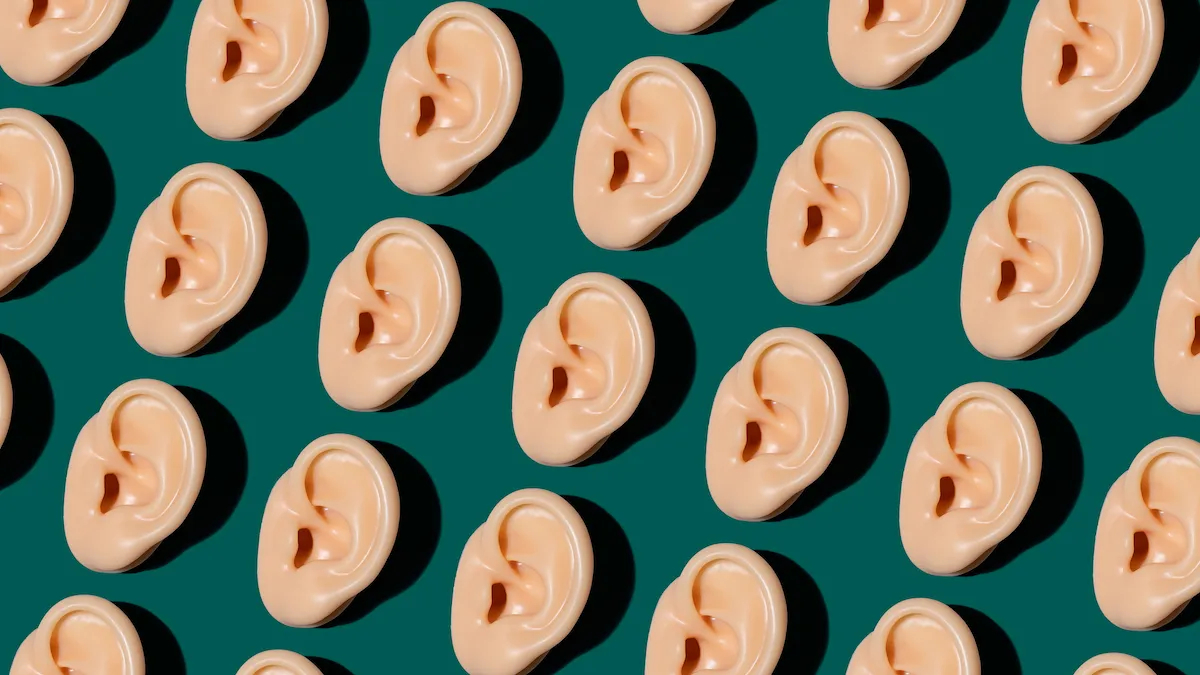
What are the risks of not wearing earplugs?
If you don’t make a habit of wearing earplugs in high-sound-pressure scenarios, you essentially and ultimately risk hearing impairment and permanent tinnitus. High sound pressure levels (SPLs) damage hair cells in the cochlea of the ear, which are the mechanisms by which sound is converted into electrochemical signals sent to the brain; high-transient impulse sounds, like gunshots or your hardcore drummer friend’s metal snare, can damage the eardrum and middle-ear conduction bones that precede the cochlea.
Cochlear damage is not easily repaired – and with different hair cells being responsible for different frequencies, hearing loss typically begins with a loss of high-frequency information.
Many who experience noise-induced hearing loss also experience tinnitus – a neurologically-originated ringing or rumbling in the ears, the precise cause and mechanisms for which are not fully understood beyond “damaging exposure to sound”.
How do earplugs work?
Earplugs work simply by stepping in between a loud sound and your eardrum, to reduce the amount of sound that reaches your eardrum. They do this by robbing the sound pressure waves of energy, and reducing their amplitude accordingly.
Conventional, full-block earplugs for light sleepers or construction workers are often made with wax or memory foam, in order to fill out the ear and completely block any sound from making it to your eardrum untrammelled. For musicians, this approach isn’t ideal – because sound waves don’t act the same across the frequency spectrum, and these kinds of earplugs will often result in a muffled, unpleasant sound.
What makes a good set of earplugs for musicians?
A good set of earplugs for musicians is able to attenuate the level of a sound without massively altering its character – enabling you to hear everything clearly, but also at a quieter, safer level. For some musicians, like drummers, higher attenuation is far more important than fidelity, but still – no one wants to try and find their groove with muffled sound in their ears.
All manners of sound can be, more or less, equally dangerous to your ears when reproduced loudly. But different frequencies of sound have different attributes, and hence can act differently. The higher the frequency of a given sound, the more energy it has – but the shorter its wavelength. Likewise, lower-frequency sounds have less energy, but longer wavelengths. High-frequency sounds are more likely to damage the higher-frequency hair cell ‘receivers’ in your cochlea, while low-frequency sounds are more harmful overall.
While high-frequency sounds have more energy, their short wavelength makes it easier to dissipate that energy with material. This is why standard foam or wax earplugs sound muffled and ‘woofy’. Good earplugs for musicians use clever acoustic filtering technology to address different sound frequencies, leading to a more even attenuation across the board, and hence a higher fidelity for the wearer.
What’s the difference between generic and moulded earplugs?
Generic fit earplugs are made so that anyone can wear them. These are almost every pair of earplugs you can buy online; they come with silicone or thermoplastic tips, sometimes interchangeable, which morph to fit snugly in your ear. Generic-fit earplugs are generally more accessibly-priced, and very effective, but can be less comfortable over time (and also run the risk of being less effective if not inserted properly).
Moulded earplugs, meanwhile, are as they sound. They are custom-made to fit just your ears, with the benefit of a more comfortable fit, better sound isolation and, often, better fidelity – generally, at a higher cost.
Some earplugs, like the Decibullz Custom Molded Earplugs, combine a generic fit eartip with a mouldable thermoplastic outer body, so you can make your own snug-fitting earplugs that are guaranteed to form a tight seal. These don’t quite catch the best of both worlds, but are useful for loud impact sounds and for better short-term comfort.
Which earplugs block the most noise?
The earplugs that block the most noise are those with the highest attenuation rating. Attenuation is measured in decibels, by one of two standards: SNR (Single Number Rating), a European standard that accounts for sub-optimal usage of a set of earplugs; and NRR (Noise Reduction Rating), an American standard that demonstrates the maximum possible noise reduction. SNR and NRR are roughly equivalent, save for 4dB subtracted from the SNR to account for user errors or poor fit.
If you’re in especially loud situations for extended periods of time, whether as a session drummer or temporary member of My Bloody Valentine, you’ll want earplugs with a higher attenuation rating. There are earplugs in my list capable of attenuating up to 27dB (SNR).
Which are the best earplugs for drummers?
The best earplugs for drummers would be those capable of the highest attenuation – without completely altering the sound they hear. Decibullz’ Custom Molded Earplugs would be safest, but not the highest fidelity; Minuendo’s Lossless adjustable earplugs have a -25dB full block that still sounds quite musical, despite cutting out a little high-end (which could indeed be a welcome feature, if the kit is cymbal-rich).
Which are the best earplugs for singers?
Singers would benefit from a set of earplugs that most accurately reflected what was going on around them. Unless in especially loud bands or situations, a lower attenuation of -15dB or -17dB would be useful for hearing monitor mixes and stage goings-on. The adjustability of the Minuendo is again a great feature to have for vocalists that perform across different genres, but the ideal would be a set of moulded earplugs that enabled complete control over the signals you hear.
Key terms
Not completely sure what I mean by some of the jargon in this guide? Here’s a glossary of the main terminology you’ll come across when researching earplugs:
Attenuation
In this context, attenuation is the reduction in sound level experienced when wearing earplugs. Earplugs are advertised with an attenuation rating, demonstrating how much they reduce sound level for users – the higher the number, the higher the attenuation and the more protection you experience.
Decibels (dB)
The decibel (dB) is a logarithmic unit of measurement, used to describe the intensity of sound (or Sound Pressure Level, SPL). For every 10dB of increased sound level, the perceived volume doubles. Prolonged exposure to sounds at around 85dB can cause hearing damage, while short-term exposure to sounds at or about 120dB can cause immediate hearing damage.
Fidelity
‘Fidelity’ is used in music and audio to describe how faithful a recreated sound is to its original state. Hi-fidelity, or hi-fi, systems are so named for their ability to truthfully reproduce sounds from a given audio source. With respect to earplugs for musicians, fidelity describes the clarity with which sound can be heard after attenuation.
Filter
Good earplugs for musicians use multi-stage filters to properly and proportionally reduce the sound coming in. It is the filter that establishes the fidelity of the sound you hear, and the level of attenuation you experience (in concert with the body of the earplug, which serves to partially isolate your eardrum from the outside world).
Flange
Earplugs are designed to act a little like a valve, as far as installation goes; it’s easy to put them in, but takes a little more effort to remove them. The tips that go in your ears are flanged to enable this (and also to enable a generic fit). The flange is the backwards-protruding collar that can be deformed inwards to meet the shape of your ear. Some eartips are double- or triple-flanged, to ensure an especially secure fit and deep penetration of the ear canal.
Generic fit
Generic fit earplugs are earplugs that can be worn by anyone. They are designed to fit the vast majority of ear canals, and can be worn off-the-shelf as a result. This is in contrast to moulded earplugs, which must be custom-made for the individual. Generic fit earplugs have the advantage of being cheaper while still offering high fidelity and trustworthy attenuation – but they can be less comfortable to wear, and more susceptible to leaking sound.
Isolation
Isolation is simply the separation of without from within. Full-block earplugs completely isolate your eardrum from the outside world, forcing all sound through the plug’s attenuative material or filter and guaranteeing a significantly quieter sound reaching your eardrum. Some earplugs for musicians will not completely isolate the ear; a small, tuned air channel is sometimes utilised to enable the passage of some high-frequency information, preserving some sound fidelity.
Moulded
Moulded earplugs are earplugs custom-made to fit your own ear canals, as opposed to generic fit earplugs that can be worn by anyone. Moulded earplugs are more expensive to buy, but offer better comfort, less sound leakage and, often, better fidelity.
NRR
NRR stands for Noise Reduction Rating; it is a measurement standard used in the USA to describe the efficiency with which a given set of earplugs for musicians attenuates sound. The rating reflects the maximum possible attenuation achievable with a set of earplugs, in decibels.
SNR
SNR stands for Single Number Rating; it is a measurement standard used in Europe to describe the efficiency with which a given set of earplugs for musicians attenuates sound. The rating is an average, in decibels, which takes into account the variability of results experienced between users. See also: NRR.
SPL
SPL stands for Sound Pressure Level, and refers to the intensity of sound at a given time. This intensity is measured, subjectively, in decibels (dB).
Tinnitus
Tinnitus is a condition related to hearing damage, wherein sufferers can hear a ringing or rumbling in their ears, either intermittently or constantly. The sound can either be neurological in origin or a result of damage to the inner ear – both linked to sudden or prolonged exposure to loud sound levels.
How we choose the best earplugs for musicians
At MusicRadar, we've been blasting ourselves with PA stacks, crash cymbals and guitar amps for as long as we can remember. As musicians and avid music fans, we understand the importance of preserving our hearing and enjoying our music without any discomfort or long-term hearing damage.
To compile our list of the best earplugs for musicians, we combine practical experience of the samples we called in to test, alongside user reviews, and discussions with our editorial team to reach a consensus. We evaluate factors such as comfort, sound quality, noise reduction, and affordability to ensure we showcase the very best earplugs available.
As musicians ourselves, we appreciate the value of high-quality gear to deliver the best listening experience. We're committed to providing reliable and knowledgeable recommendations to help music listeners find the ideal earplugs to suit their needs and preferences. Our aim is to empower music fans to enjoy their favorite music to the fullest while protecting their hearing with the best earplugs on the market.
Find out more about how we test music gear and services at MusicRadar.
Why trust us?
☑️ MusicRadar established 2007
☑️ Over 5,000 reviews on-site
☑️ 18+ years of product testing
MusicRadar first launched in 2007 and has been an authority on music gear ever since, rigorously testing key launches since day one. The site is run by a diverse team of passionate musicians who live to gig, record and jam, alongside a core group of trusted specialist freelance writers. We understands what players need, because we’re players ourselves, and we test from this perspective.
Our team have been testing music gear for 18+ years, constantly refining our methodology, delving deeper into products and drawing on our experience of what has come before to understand today’s products better than anyone.
Latest updates
30/07/25: We've completely overhauled this guide, starting with calling in a number of earplug samples for our writer to test in a variety of music-related situations - from DJing and gigging to the rehearsal room and live events - to get a real picture of performance in a range of scenarios. Not only do we present a true, first person perspective on each product, but we've also updated the FAQs to answer every question you may have about hearing protection, alongside a glossary of key terms, and some useful buying advice to help you find the right pair for you.
Read more:
MusicRadar's got your back
- Protect your ears on stage with the best in-ear monitors
- These are the best studio headphones for music making
- Best budget studio headphones: performance for less
Want all the hottest music and gear news, reviews, deals, features and more, direct to your inbox? Sign up here.

James Grimshaw is a freelance writer and music obsessive with over a decade of experience in music and audio writing. He's lent his audio-tech opinions (amongst others) to the likes of Guitar World, MusicRadar and the London Evening Standard – before which, he covered everything music and Leeds through his section-editorship of national e-magazine The State Of The Arts. When he isn't blasting esoteric noise-rock around the house, he's playing out with esoteric noise-rock bands in DIY venues across the country.

